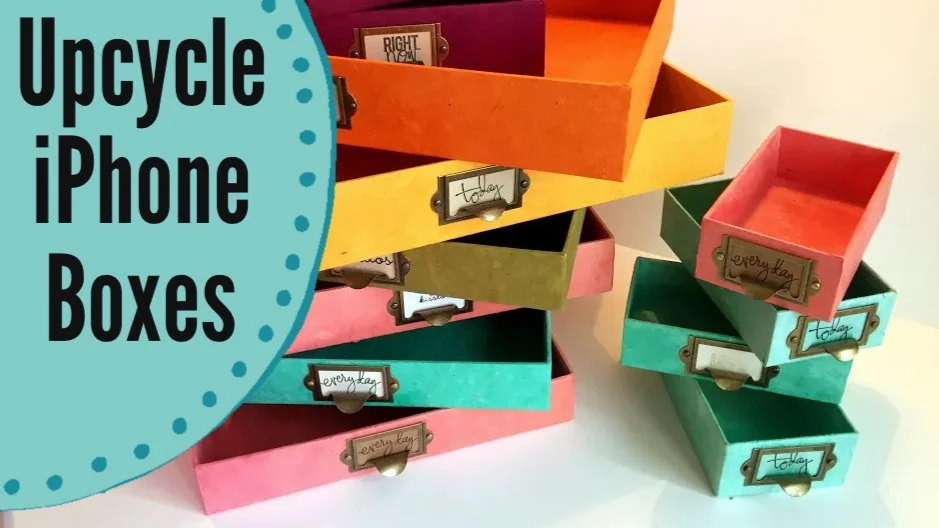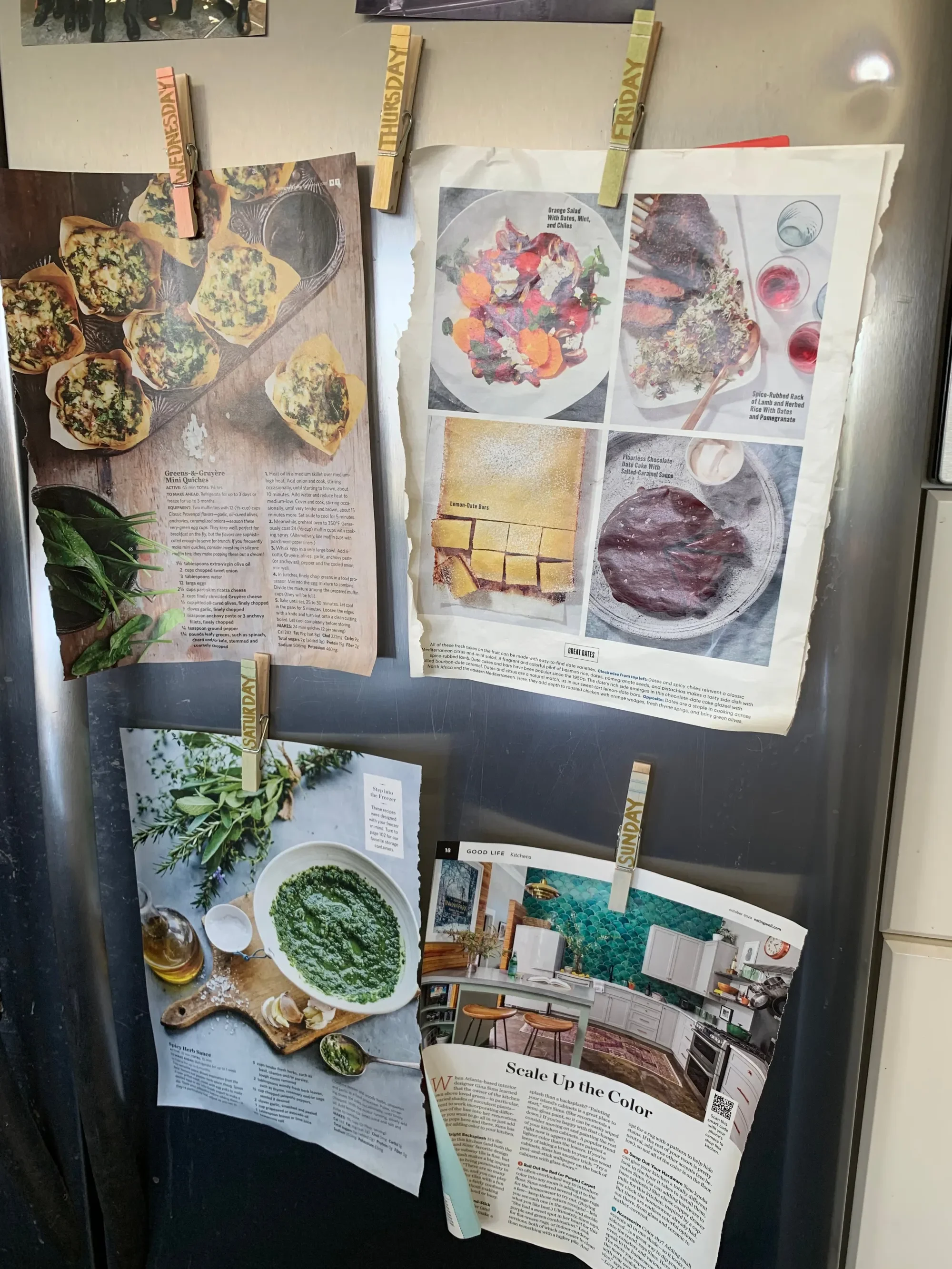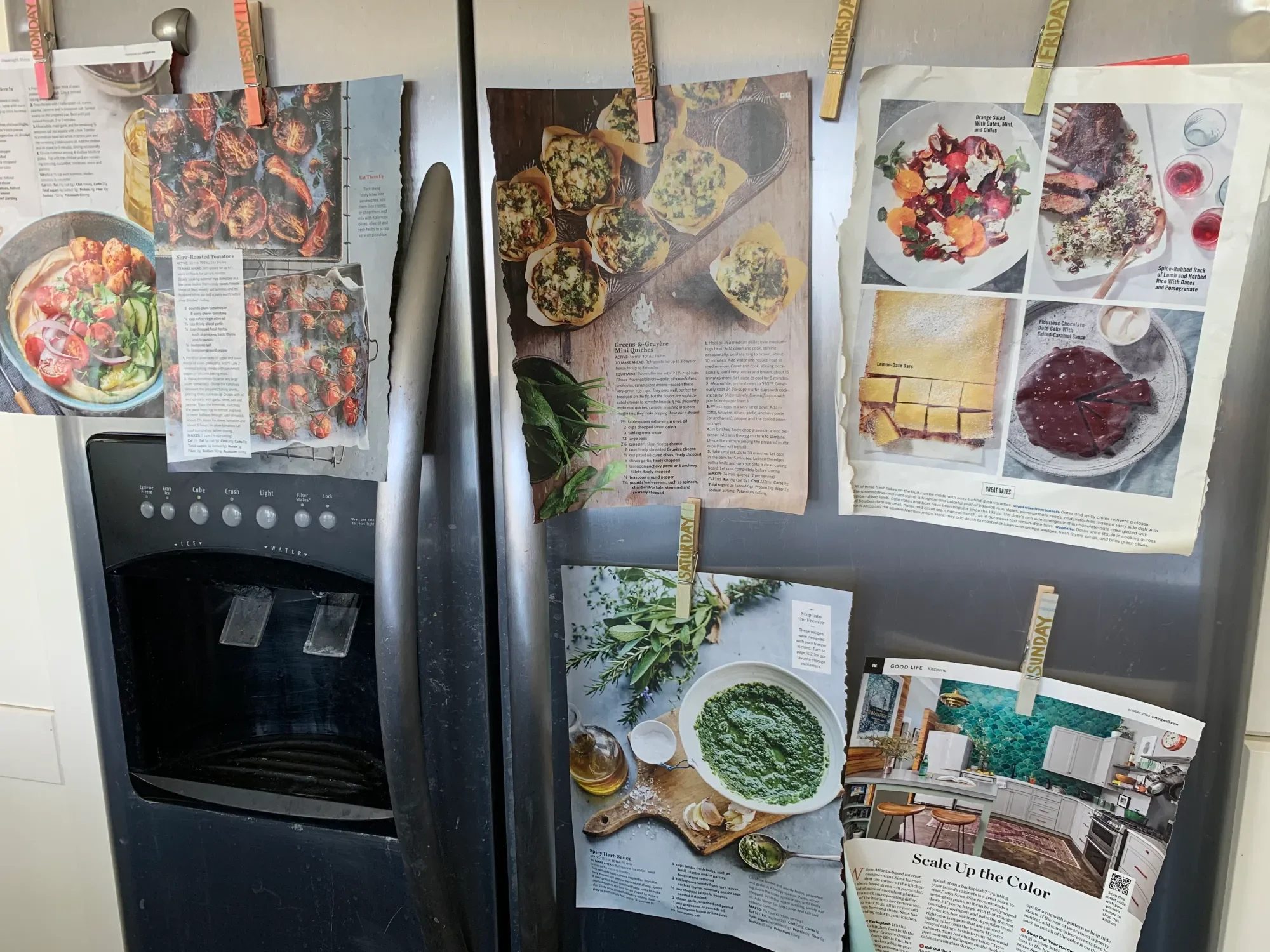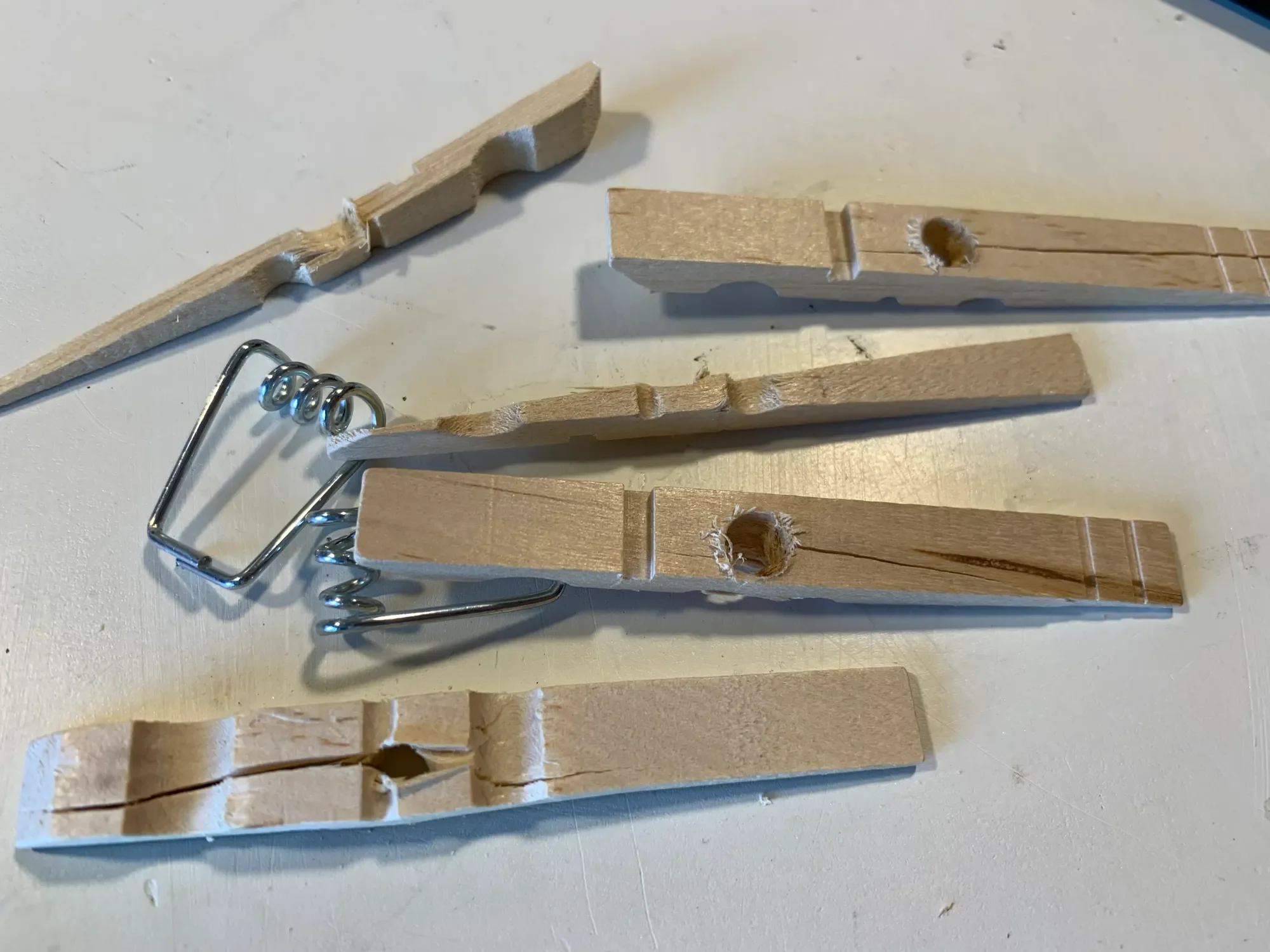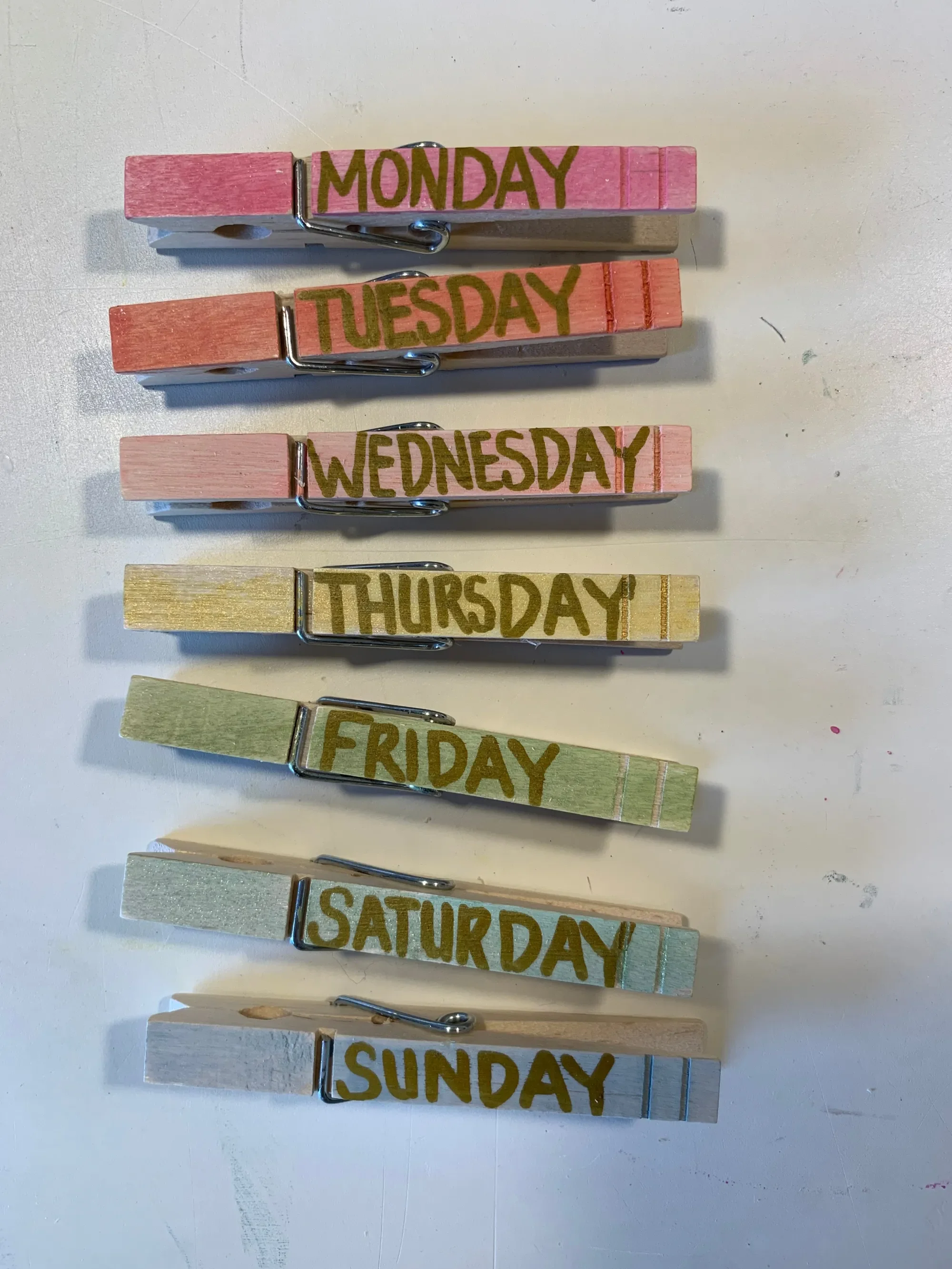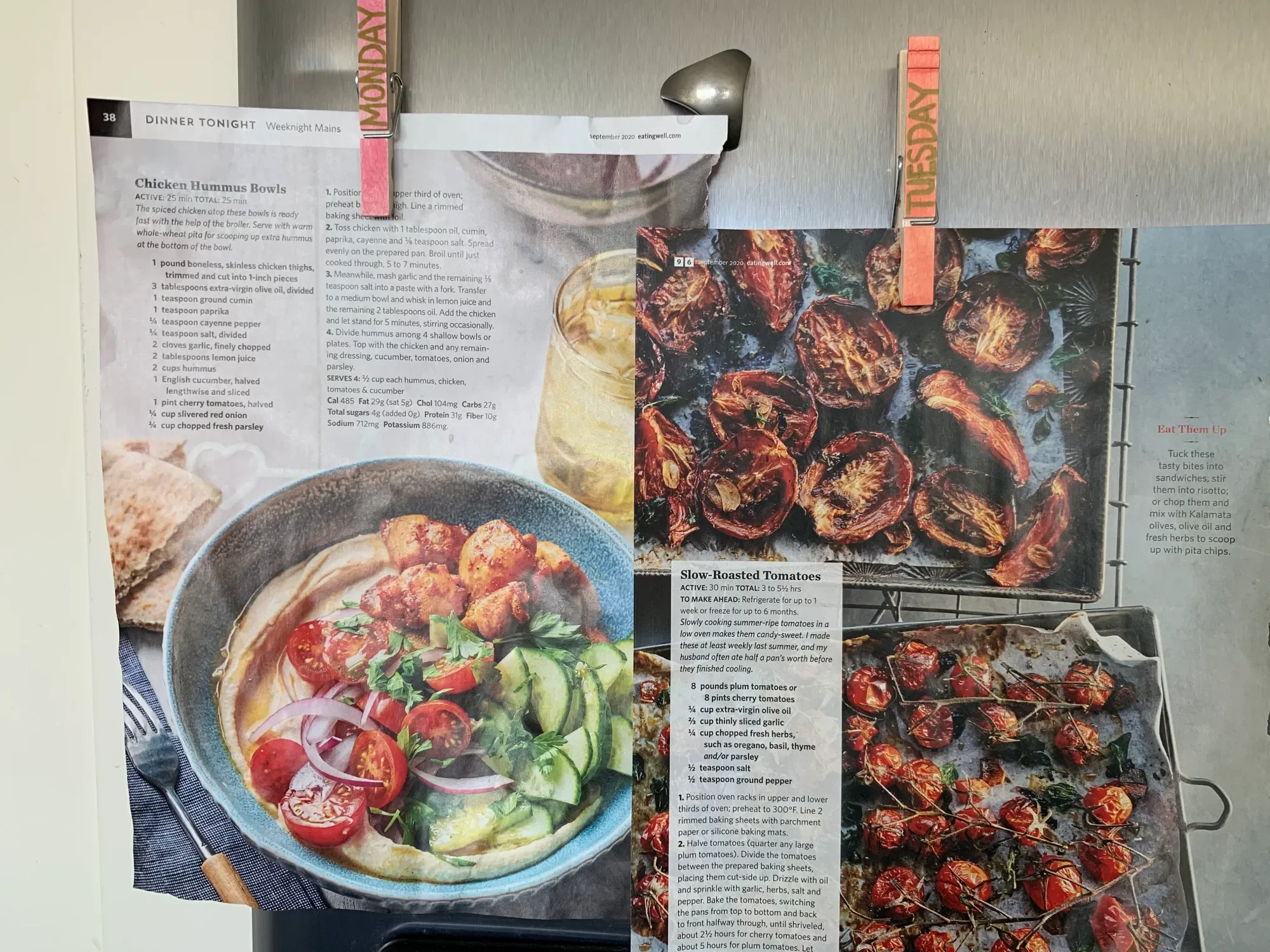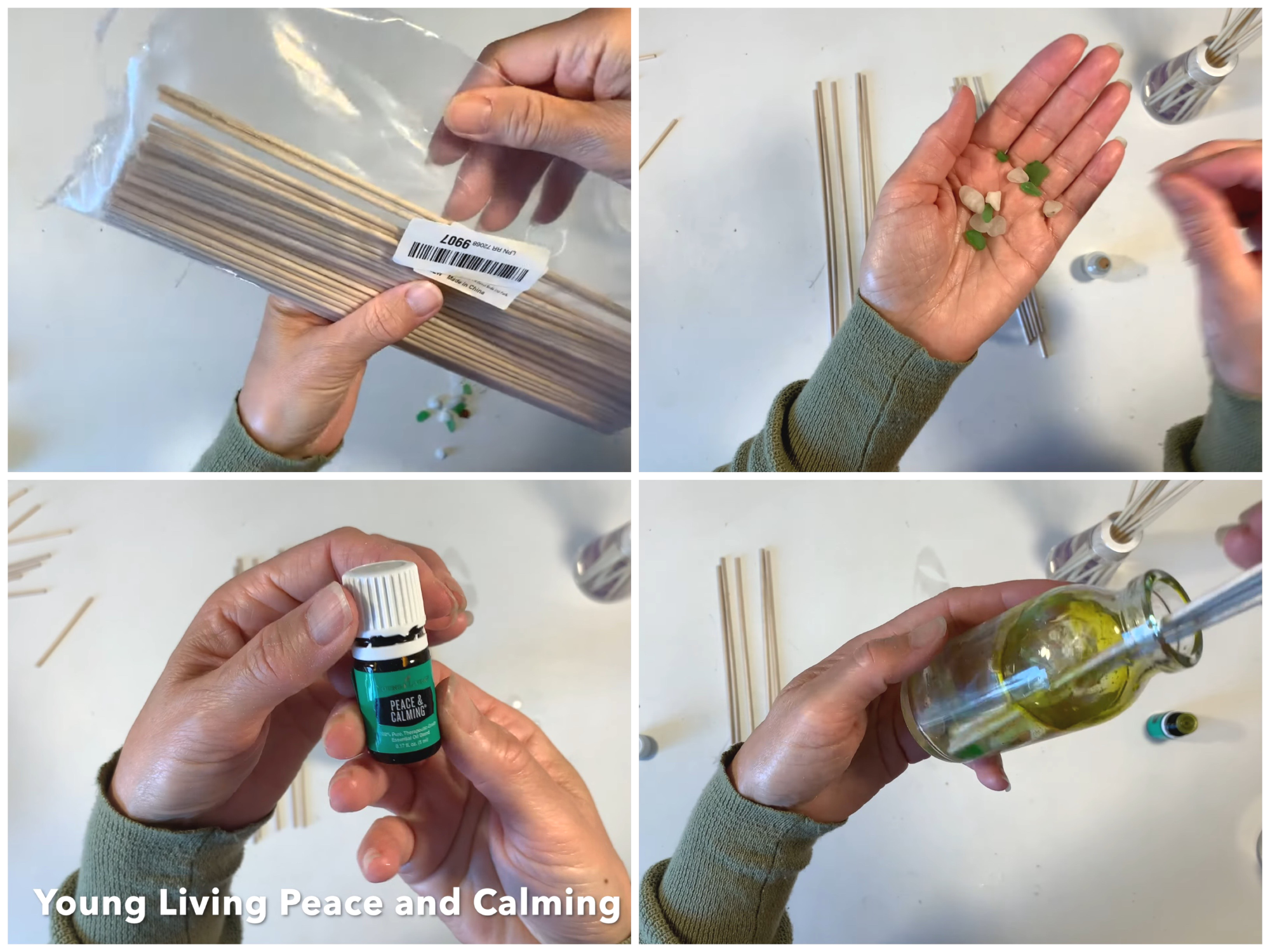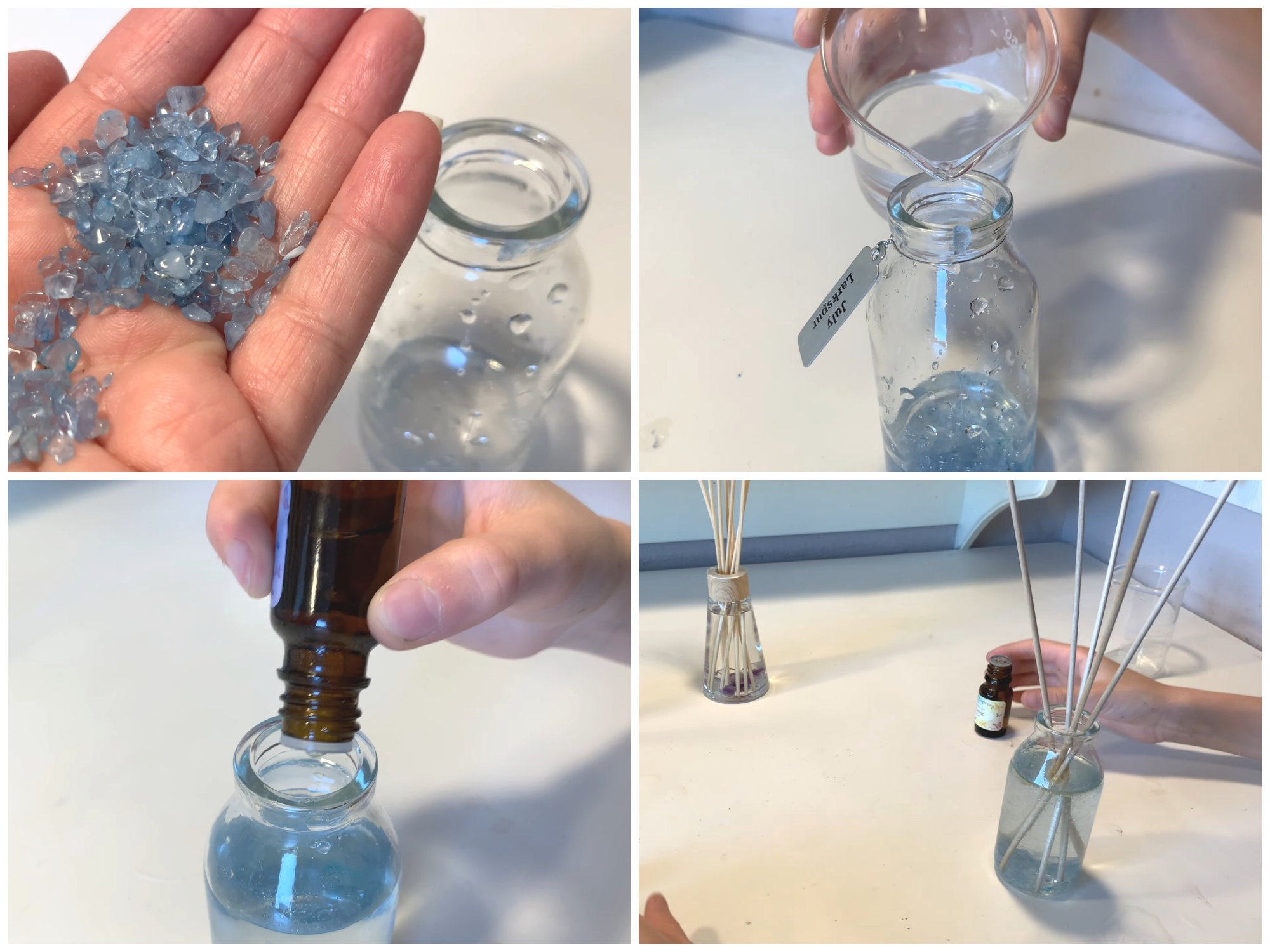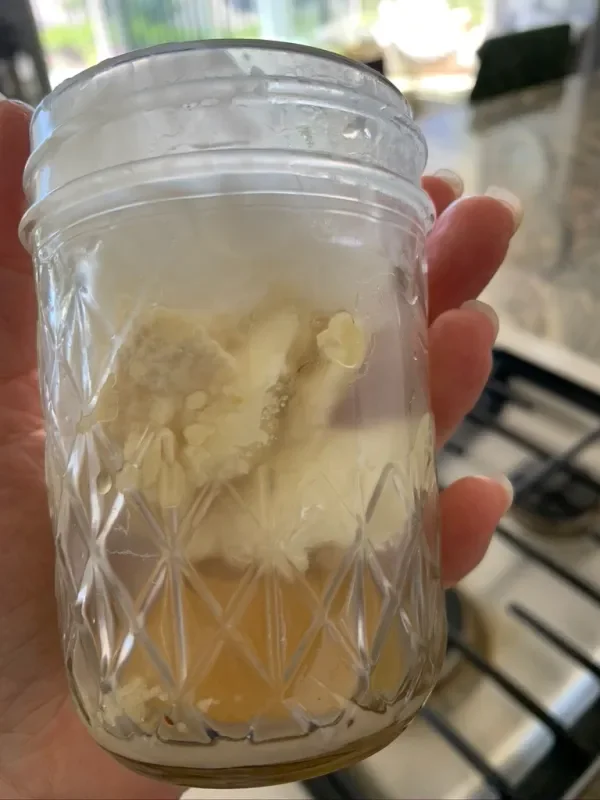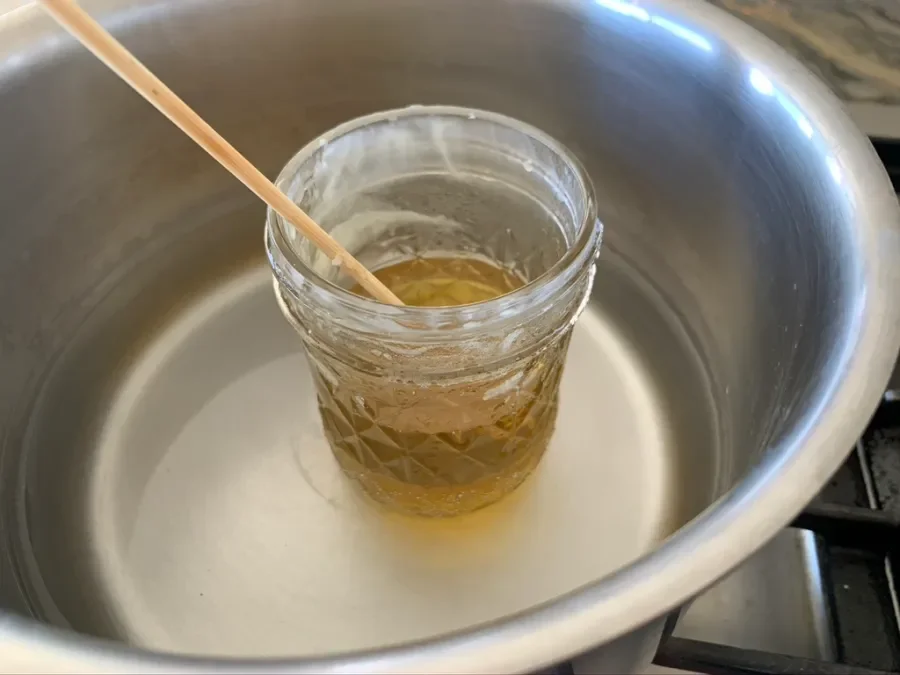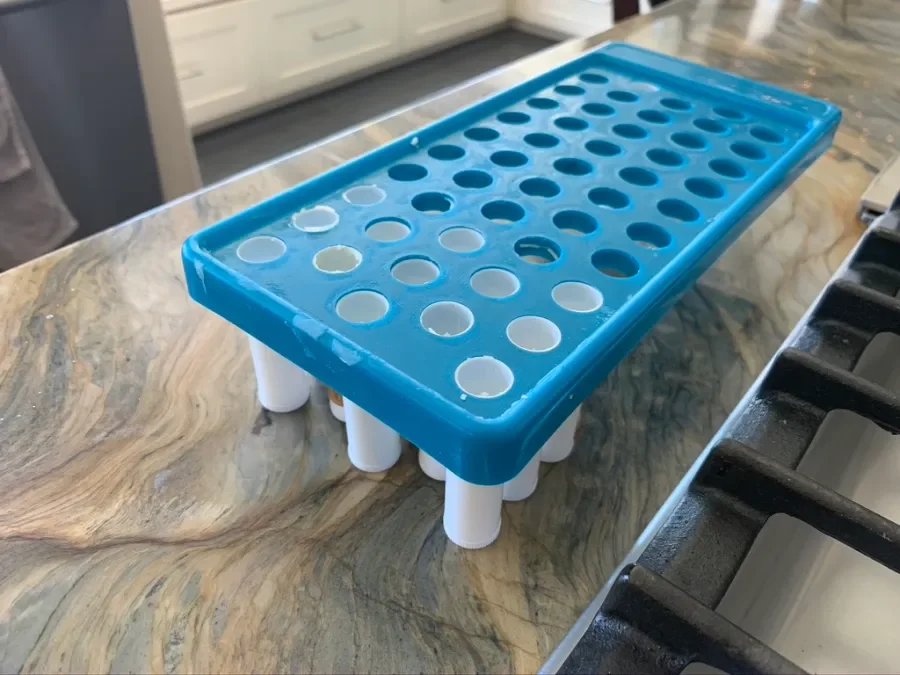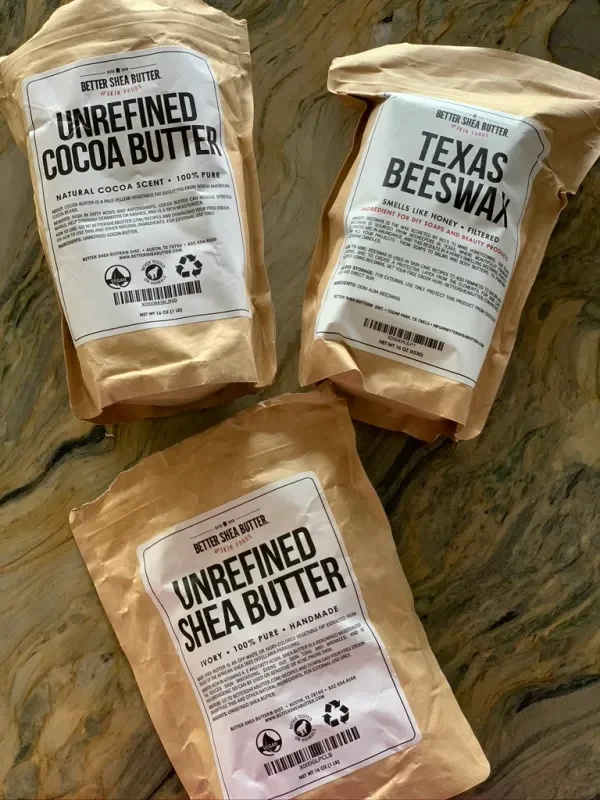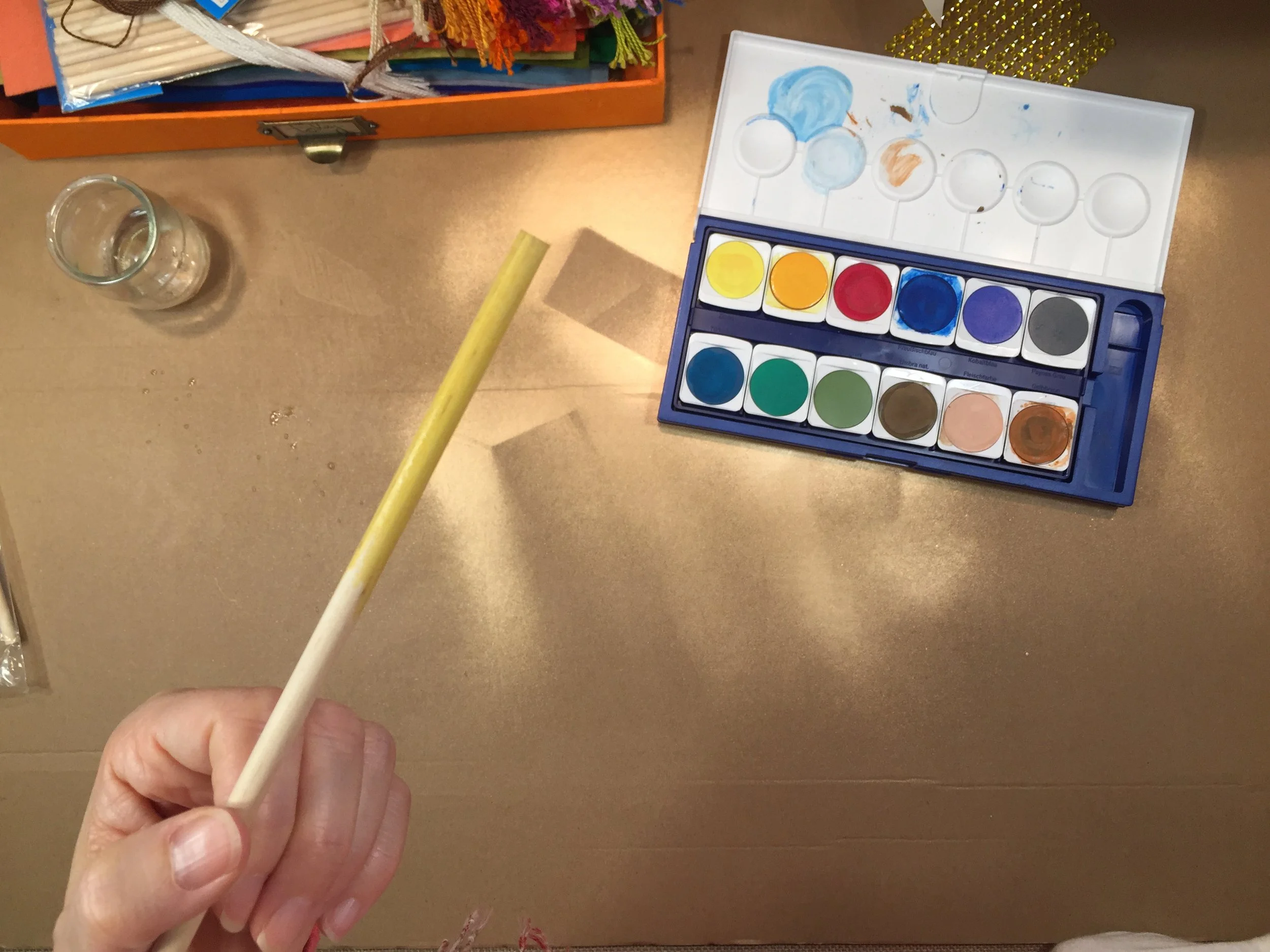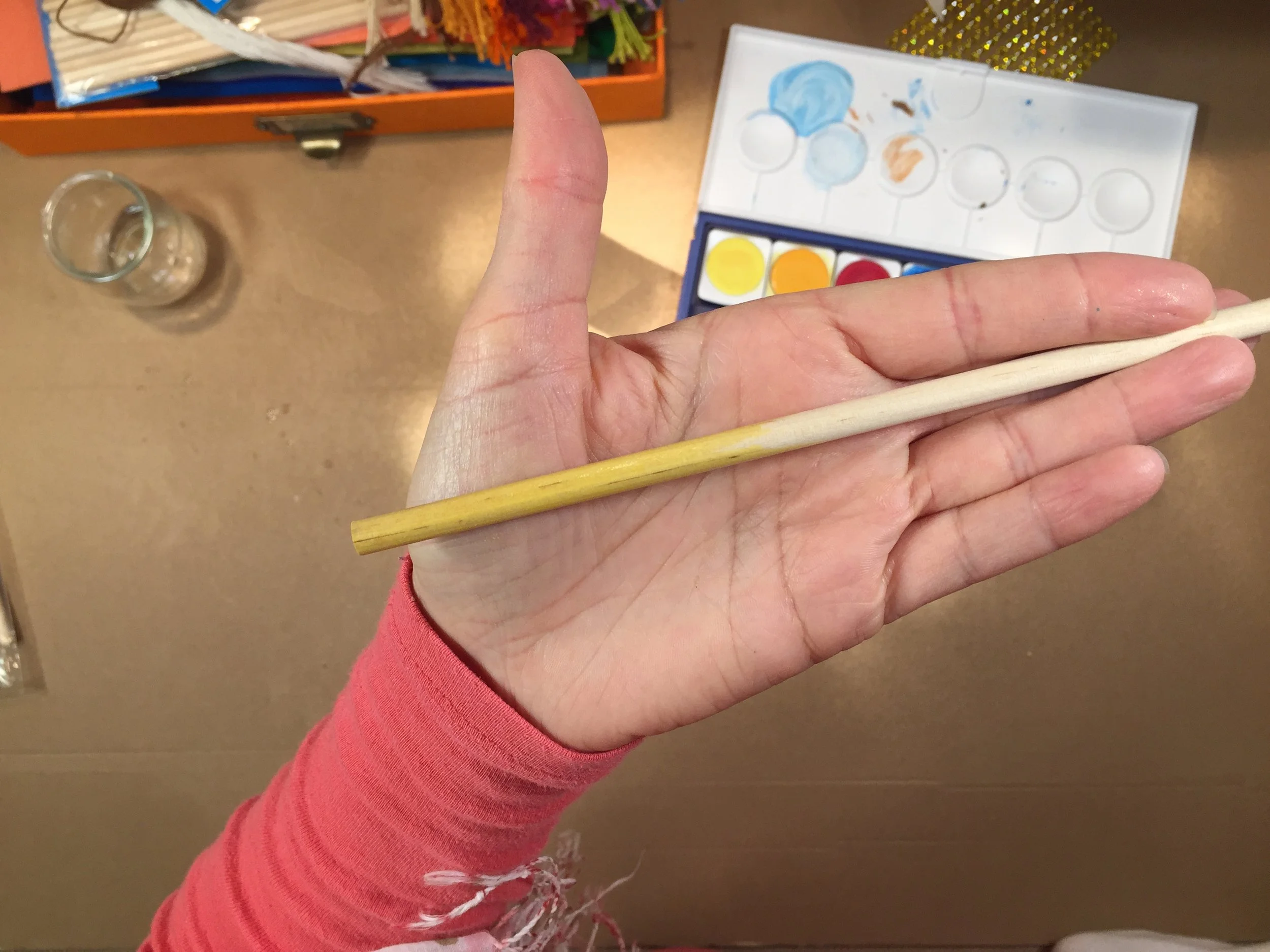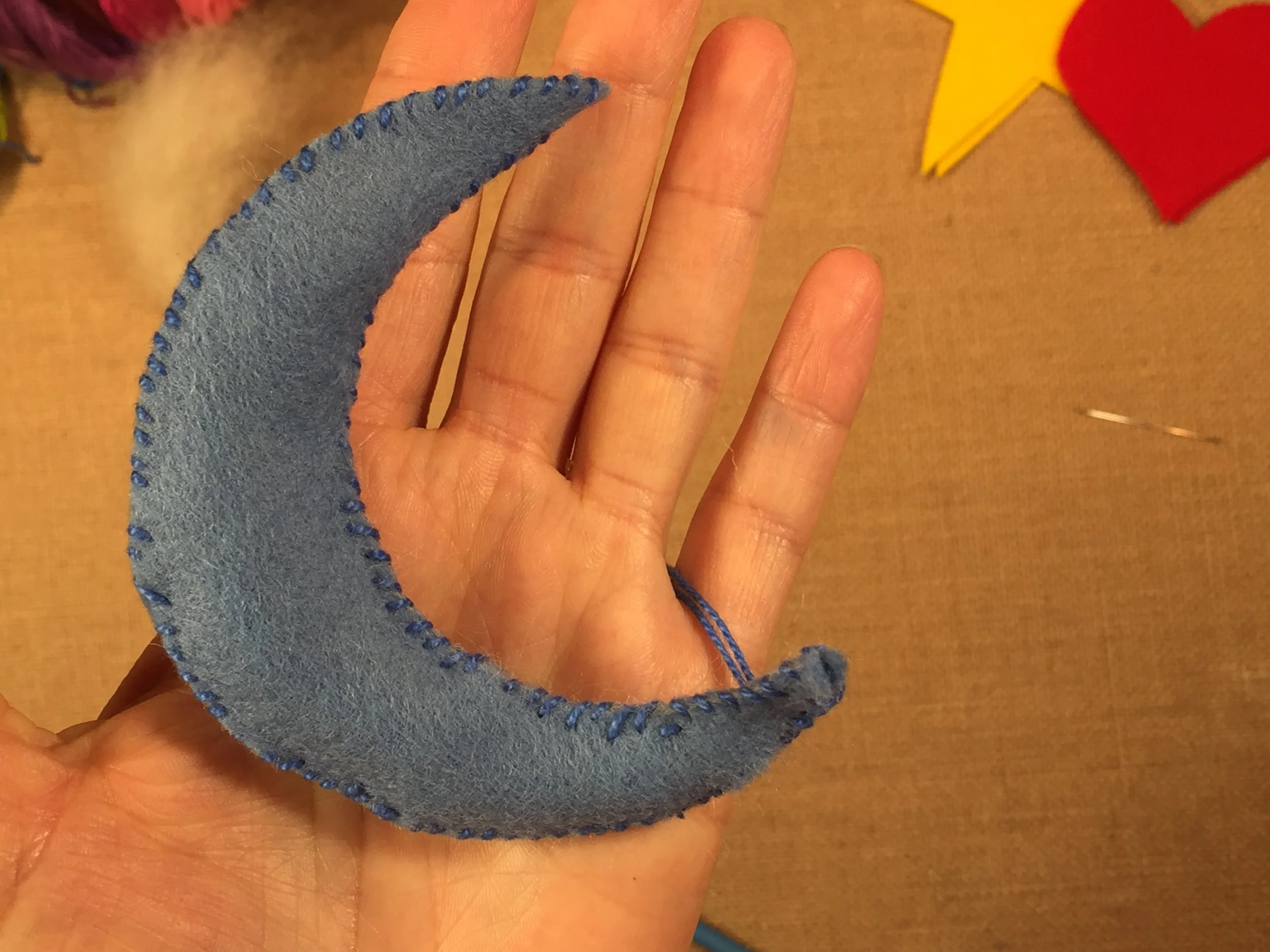Tutorials
Upcycled, repurposed and beautiful
I love making things. I love the creative aspect of crafting. I love it even more when I can repurpose items. Here is a collection of projects and tutorials that don’t require a lot of time, and often you can do them with things you have around the house.
There are many more tutorials that accompany lessons and unit studies. Check out the Science, History, and Math main lesson blocks for more educational tutorials. And if you are interested in Peg Dolls and Finger Puppets, you may find dozens of tutorials on how to make these lovely toys.
Tutorials
-

Clothespin Planner | Meal Planner
These fun clothespin planners are a great way to visualize your week, especially if you have children. You could use them to show the activities you have planned, or who you are visiting but adding photos or images to the clothespins. We are using ours to meal plan. I have magazine clippings and personal photos of the recipes we would like to try to ones we already love that are our visual meal planner for the week.
-
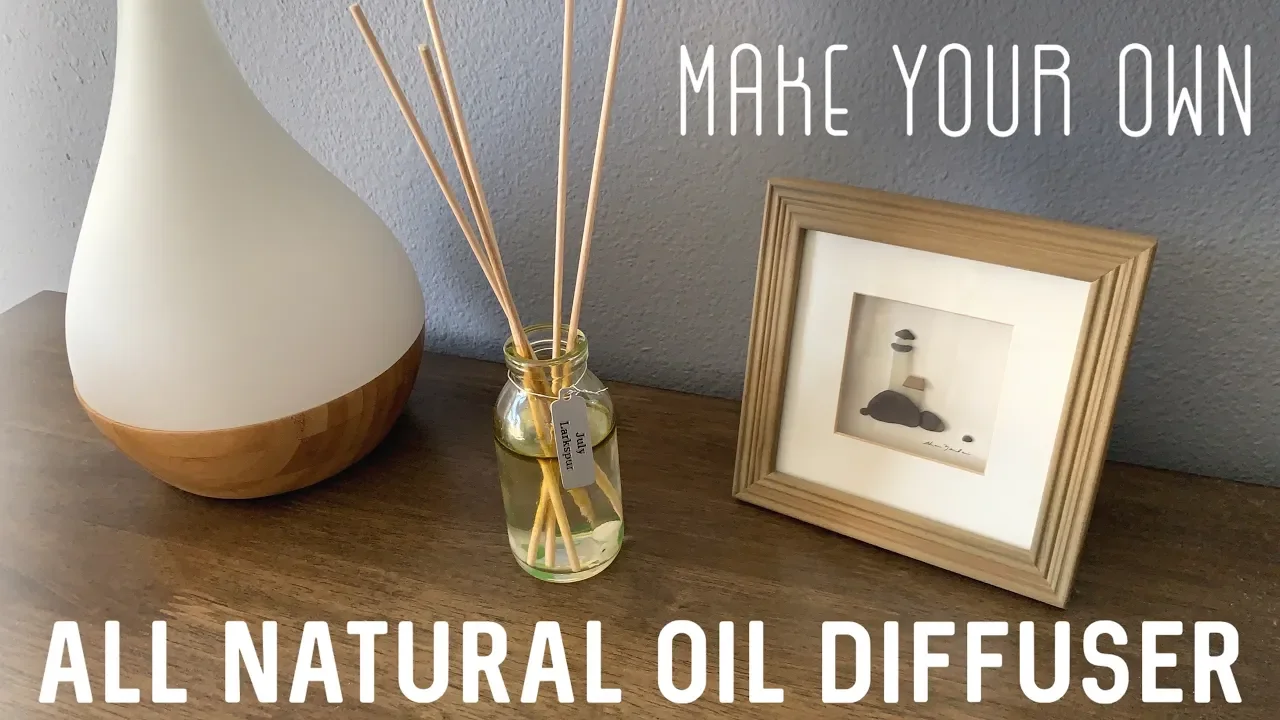
How to Make an Oil Diffuser
Recently a friend gifted us a diffuser. The ones with sticks in a jar. My 10-year-old daughter loved it! And asked if we could make them. As a homeschooler and avid crafter, not only did I say yes to the idea, we did it right then! I repurposed various supplies and thankfully, I had everything on hand. We used old honey jars and other decorative jars we had been saving, I have a variety of essential oils to choose from, we used 1/8 inch dowels (you could use bamboo skewers) which I bought to make double pointed knitting needles.
-
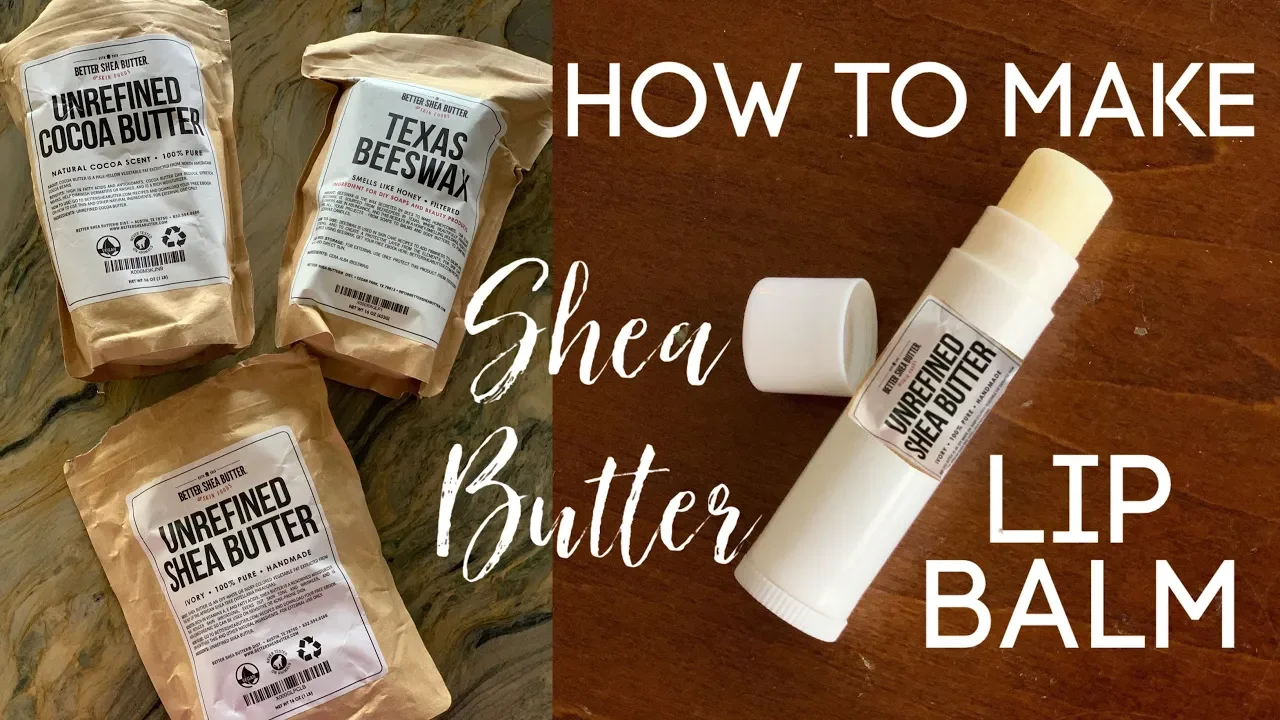
Lip Balm Tutorial
Making lip balm is more simple than I thought. With a few basic materials, you can make dozens of lip balms in just the right consistency and flavor. Plus, you can mind your ingredients so you're using the best ones available. For this project, we are using shea butter, coconut oil, beeswax and cocoa butter.
-

How to Make Bar Lotion and Lip Balm
This is hands down the best lotion ever! I’ve upgraded the ingredients, and this time around, I’m loving this even more than the first time we made bar lotion. This formula is super simple and the supplies are easy to find. I purchased everything from Amazon except the coconut oil which I got from Trader Joe’s.
-
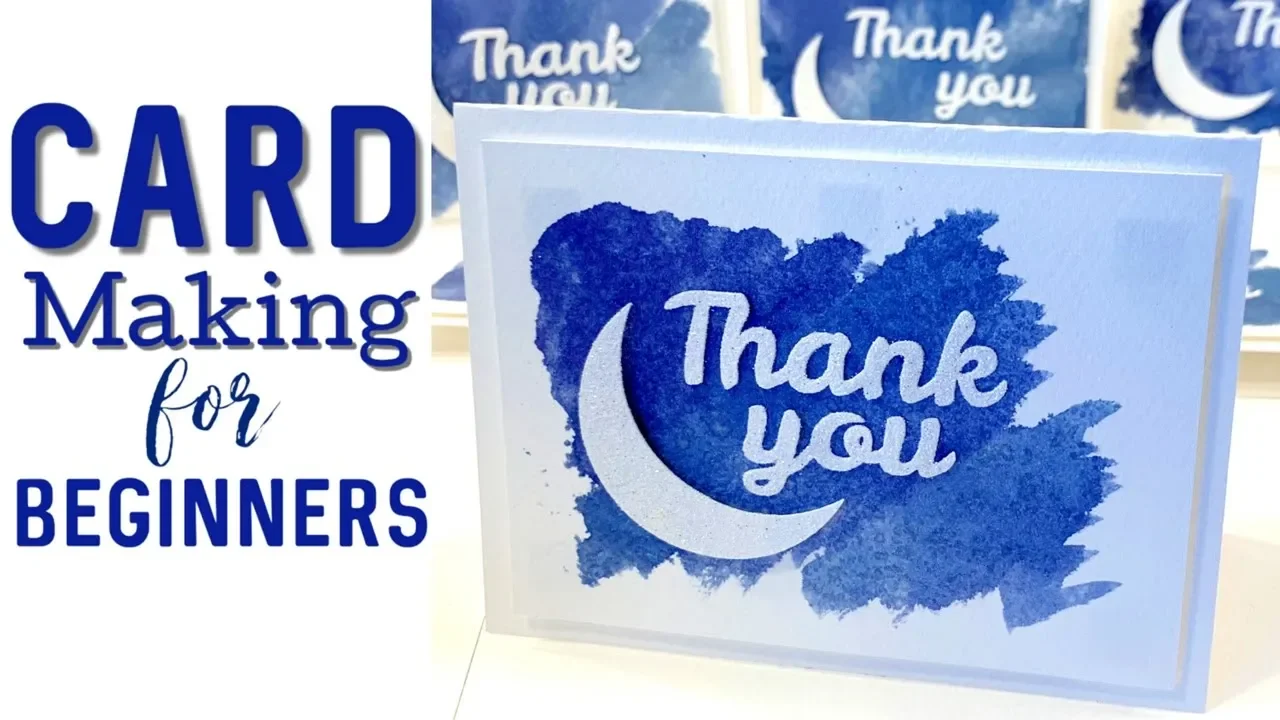
How to Make Greeting Cards
I love dipping into our supplies for projects that serve two purposes: art and education. These simple Thank You cards with an astronomical design (crescent moon on a night sky) were a fun excuse to pull out our Distress Inks, glitter and our Silhouette Cameo machine.
-
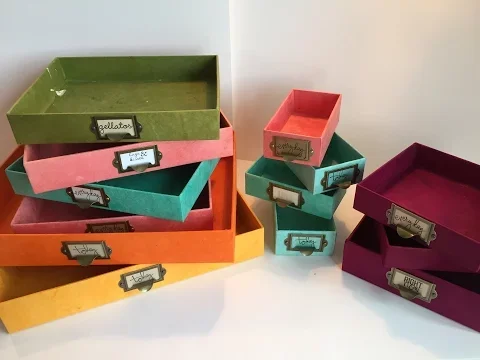
How to Make a Decorative Box | Upcycle DIY Project
Upcycle any box! In this double tutorial, I make some mistakes. Watch to see how you can remedy some problems associated to cover boxes in this upcycling tutorial. Make sure it's well made and sturdy. All you'll need for this project is lokta paper, spray adhesive, scissors, label pulls, and metal brads.
-
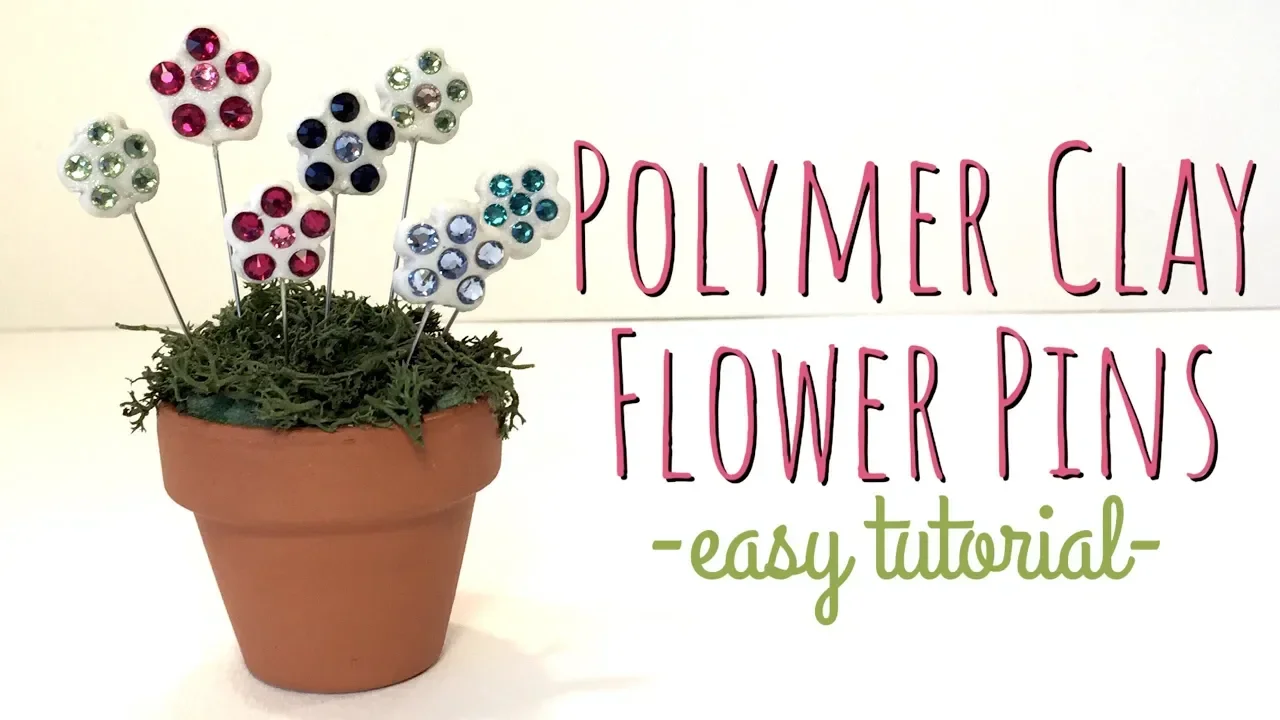
Scarf Pin Tutorial
If you want a super cute way to store scarf pins, try this little clay pot filled with florist foam and topped with moss. Make your own flower pins to complete this super adorable look. The scarf pins are just straight pins that can be used to keep your hijab in place, or you can use these pins to keep notes on a cork board.
-

How to Make Bath Fizzies
Bath Fizzies with mystery toy surprises inside?! What's not to love! This is a fun twist on bath bombs and sure to delight those reluctant bath takers. I made these with my 11-year-old son and 7-year-old daughter, and they had a great time doing this project. I was surprised how much my 11-year-old liked making these and more so found him to be quite a good helper.
-

How to Make Bar Lotion for Beginners
This bar lotion is so easy to make, with no special equipment, you're sure to be making your own in no time. Made with just three all nature ingredients, these luxurious bar lotions will be your favorite in no time. They also take no time to make! With about 5 minutes of prep, 15 minutes to melt and another 10 minutes to pour, set and clean up, you're likely to be making these often and for everybody!
-
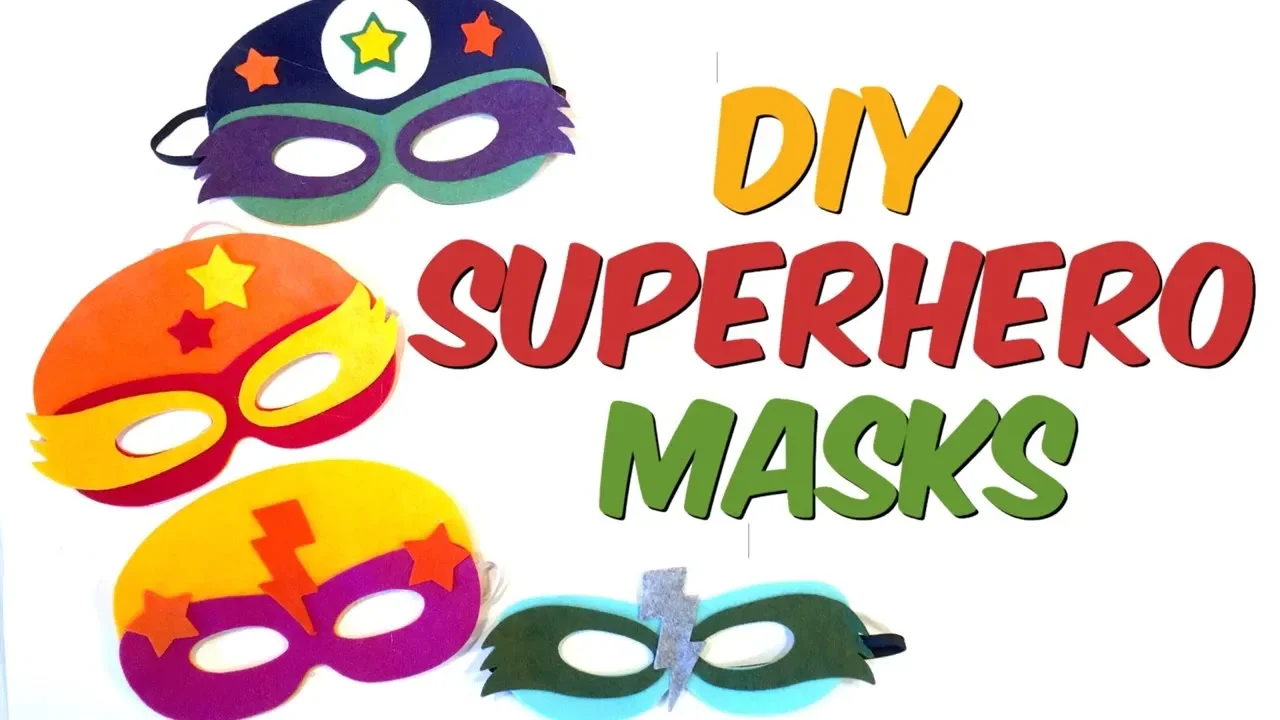
DIY Superhero Masks | Tutorial
I didn't think making our own superhero masks was going to be as fun as it turned out, but it was awesome!!! My kids started out by making three masks each, but quickly asked to make more. I got in on the fun and made one, too, then another and then a few more!
-
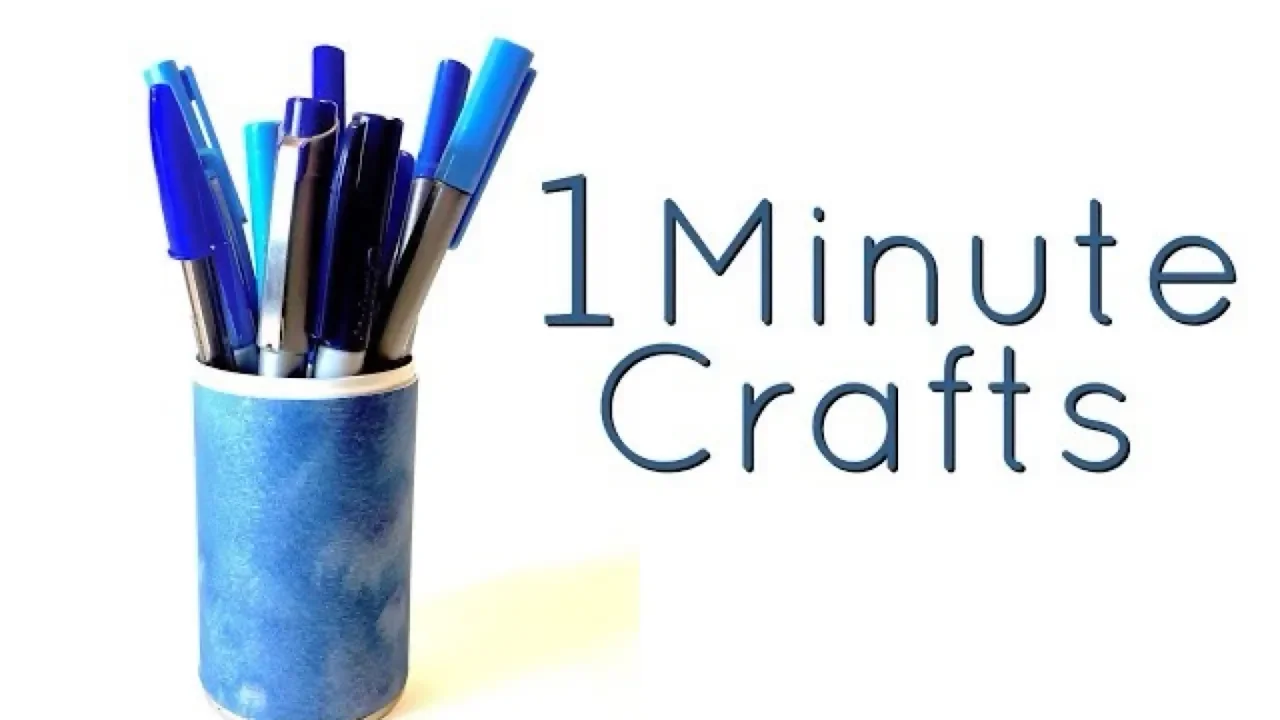
1 Minute Crafts | Upcycle Tin Can
This is a super easy upcycling craft you can do with any tin can and some decorative paper. Just use electric tape along the edge of the can to protect yourself from sharp edges. File down any protruding edges before applying tape. Use double stick tape to adhere scrapbook or watercolored paper to the outside of the tin can. Be sure your can is thoroughly cleaned inside and out before taping your paper in place.
-

How to Bind a Book
Here's one way to bind a main lesson book after you've completed your work. If you wish to use multiple art mediums for a main lesson block or if you are working with watercolors, binding your loose sheets of papers along with your narrations after the block is over is one way to do it. You can bind the papers easily with a three-hole punch and a binder if you use 8.5x11 inch paper, or you can do a staple binding.
-
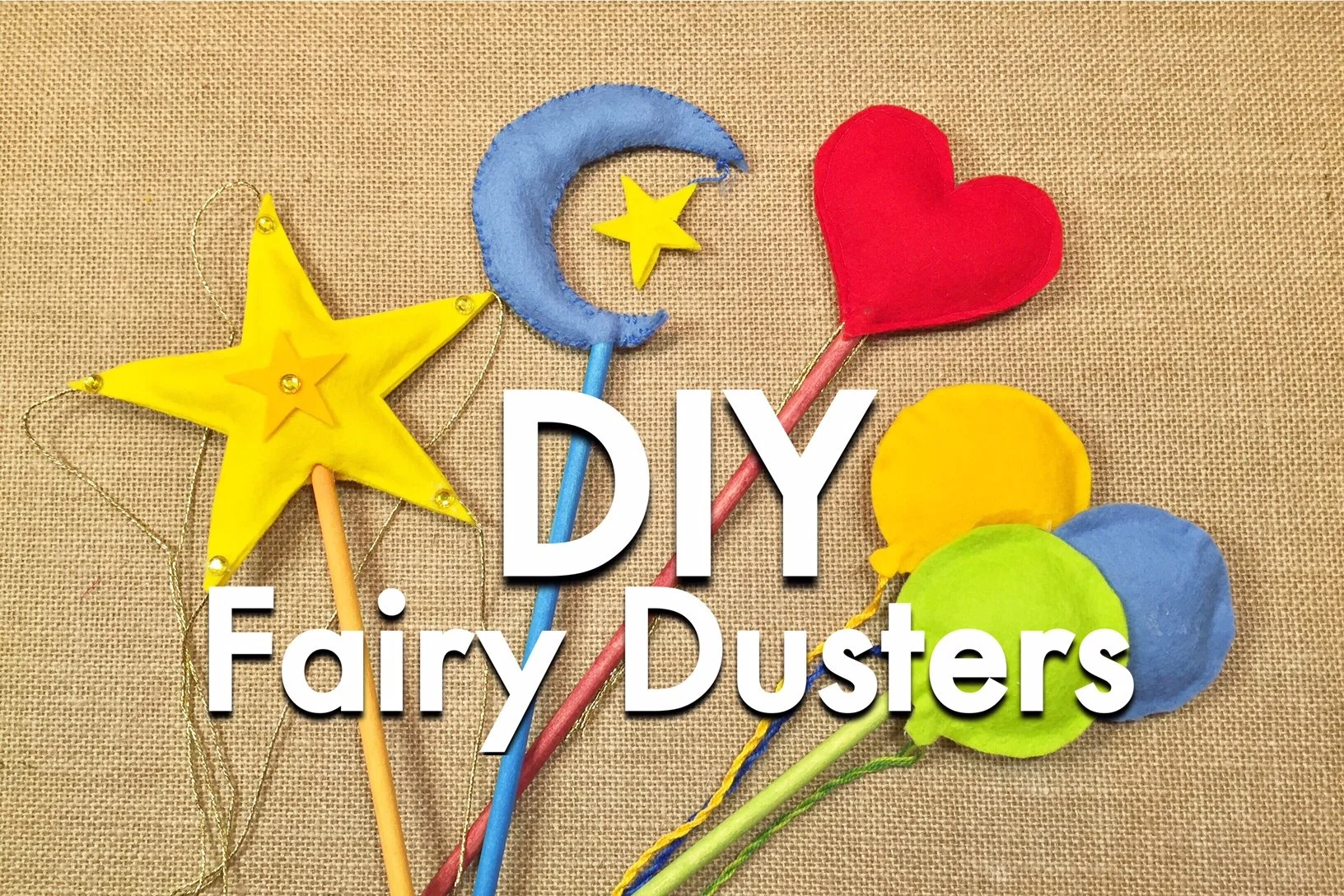
DIY Fairy Wands
I love making things for my children, and this craft delighted them! I'm going to show you four different ways to make these wands. This project is fast, easy and affordable. You can find all supplies at your local craft store and with four methods to choose from, you'll find one that suits your skill level.
-
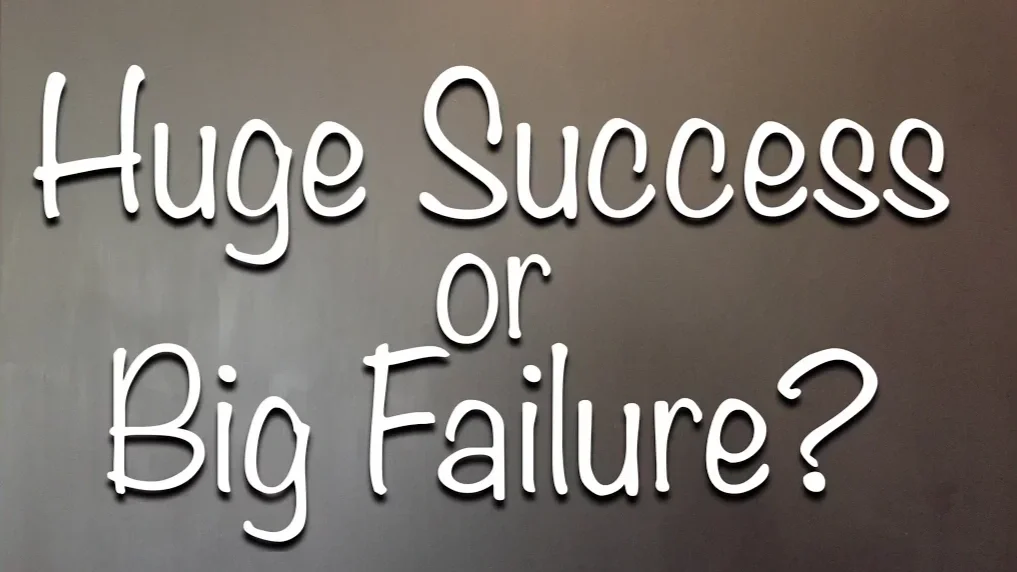
How to Use chalkboard Paint
I love having a large chalkboard, but over the years, the texture was smoothed out from repeated use. This made drawing with pastel chalk very frustrating as none of the chalk would stick when we did our Waldorf inspired chalk drawings.
-
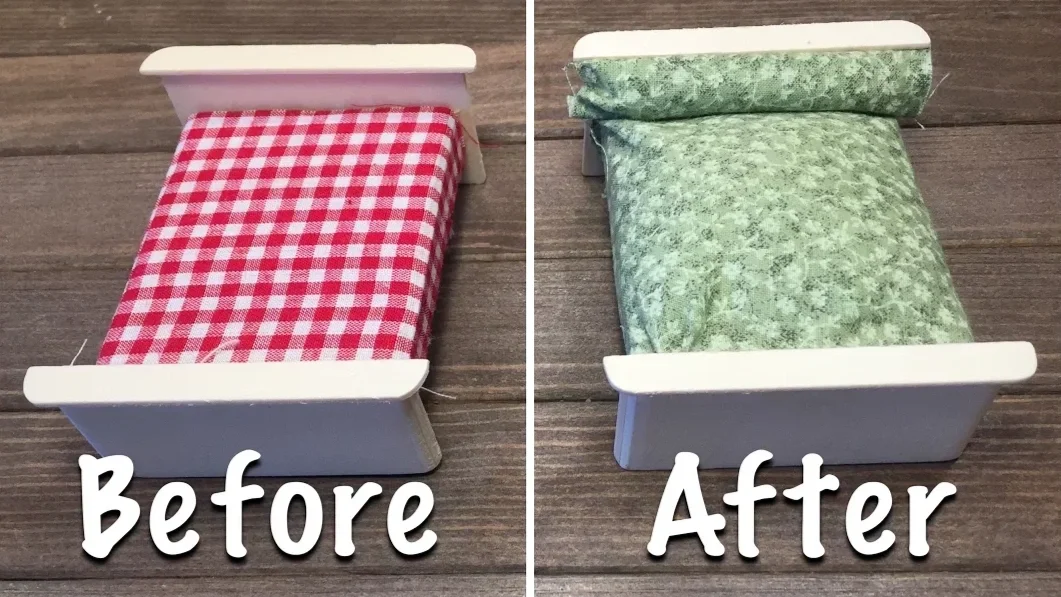
Dollar Tree Craft | Doll Furniture
It feel it’s hit or miss when buying toys from Dollar Tree, but these dollhouse furniture pieces are definitely a win! I’m impressed with the quality and durability of these pieces, not to mention they are made of wood!
-
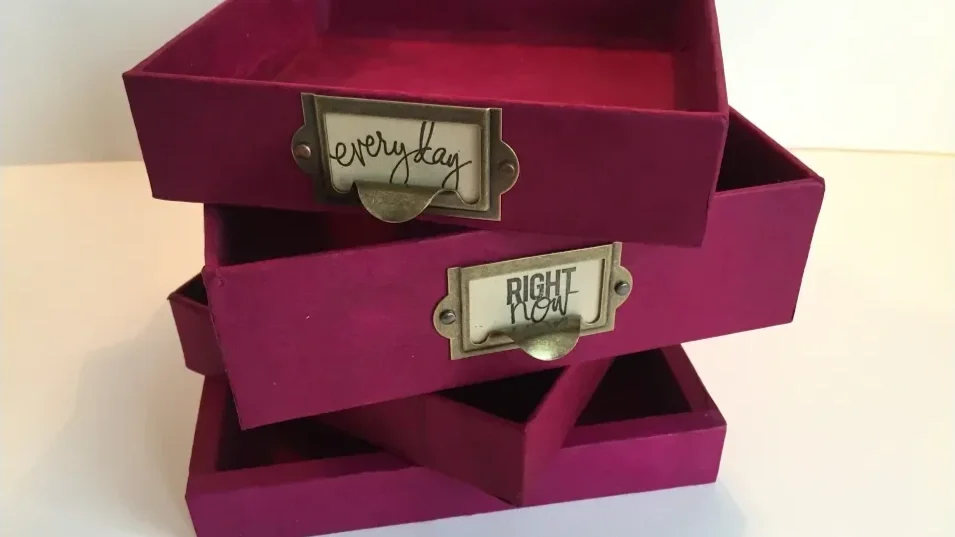
How to Cover Any Box | Upcycle Tutorial
Upcycle any box! Make sure it's well made and sturdy. All you'll need for this project is lokta paper Blick Art Supplies, spray adhesive, scissors (I prefer non-stick scissors), label pulls, and metal brads.
-
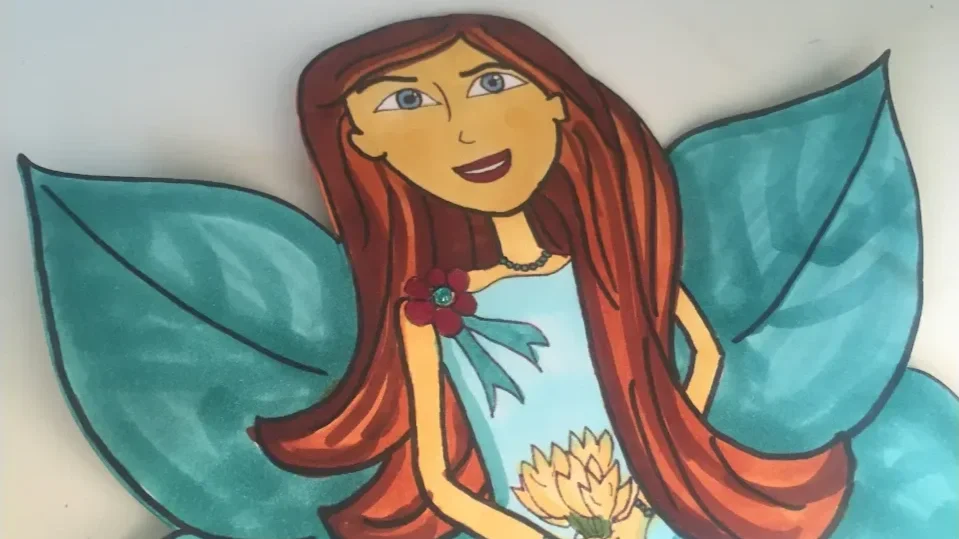
How to Make Fairy Paper Dolls
Inspired by the paper dolls from the book "How to Get Hijab Ready", I made for my daughter a set of paper fairy dolls because she wanted fairies with wings! I don't know how to draw so I copied (somewhat) the dolls available for download.
-

How to Cover a Macbook Box | DIY Upcycling Tutorial
In this tutorial, I am showing how to upcycle a MacBook box by covering it with decorative paper to create a beautiful storage container. For this project, I used Lokta paper in the color Pumpkin, which has a rich handmade texture.
-

What is Project Life?
Ever wonder what Project Life is all about? Even if you're not crafty, I think anyone can do Project Life scrapbooking. It's so easy. All you need is an album, sheet protectors and a Project Life kit. That's it!! I'll show you the different products you need to complete an album.
-
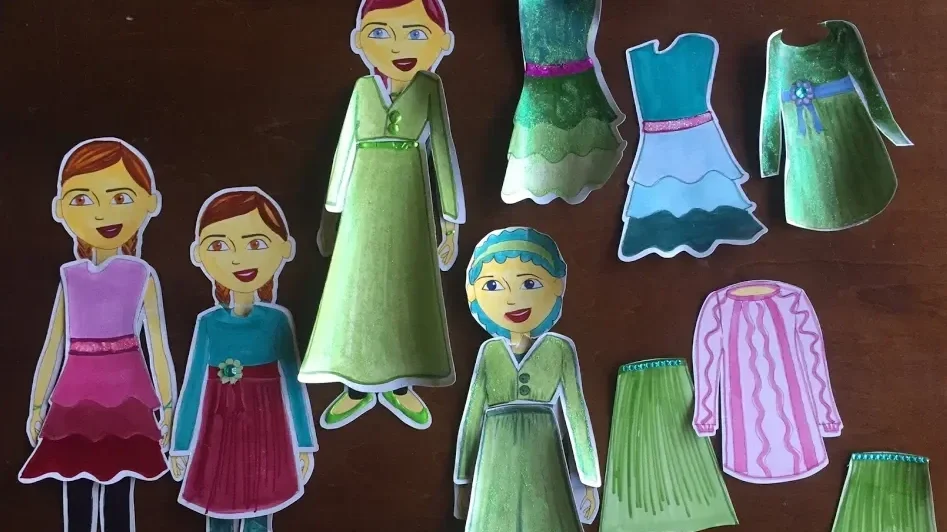
How To Make Paper Dolls
Print out paper dolls on glossy paper backed with magnetic sheets so paper dolls can have interchangeable outfits! I thought the idea was perfect for these paper dolls I downloaded.
-

Upcycle an iPhone Box | DIY Tutorial
Learn how to upcycle and cover an iPhone box. These are some of the nicest sturdiest boxes. They are so nice, it’s impossible to throw out. So, after many years and many boxes (some gifted), I have made a dozen covered boxes that have served as a storage and organization tool.
-
How to Cover and Upcycle an iPhone Box
Back in 2016, I recorded a number of videos of upcycling iphone, Macbook and other boxes. These durable boxes were perfect as organizational bins. I saved them and was even gifted empty boxes from friends and family who knew I could use them. I had so many boxes and so many videos, this one never got posted here. So, after nearly 10 years, I present to you a video from the deep archives of Pepper and Pine. Enjoy!
-
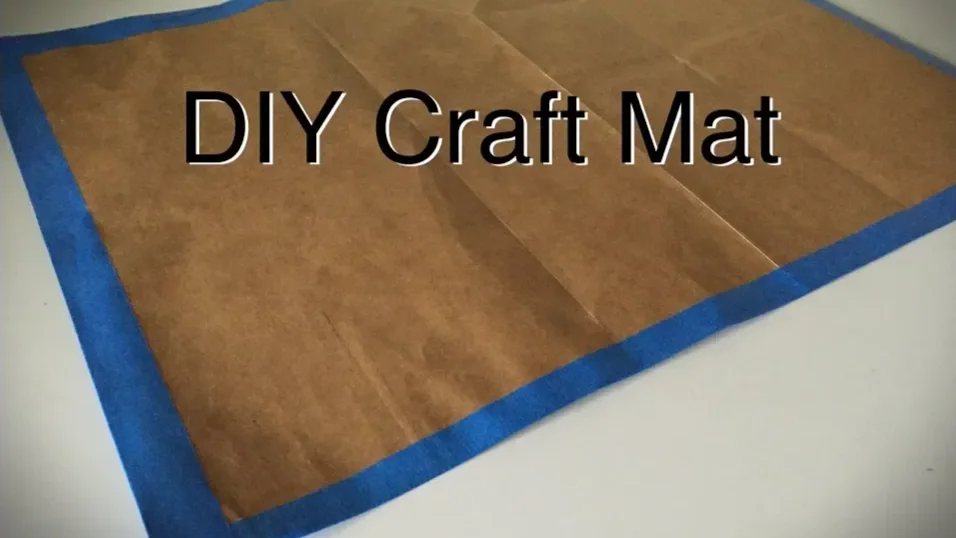
How to Make a DIY Craft Mat
I learned how to make these craft mats from another YouTuber years ago; the only alteration I make to them is to add Con-Tact paper to one side to make a non-porous craft mat for watercolors. These craft mats are made from paper bags you get from the grocery store. Additional supplies are painter's tape or masking tape, and Con-Tac paper (optional). You'll also need a pair of scissors.
-
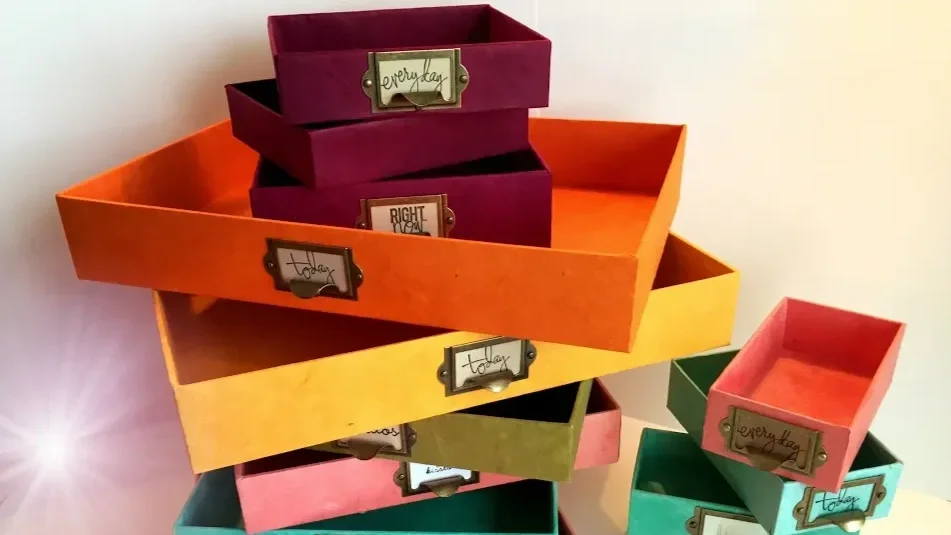
Upcycle an iPad box | DIY Tutorial
Upcycle your iPad, iPhone or Macbook boxes into these charming decorative boxes. For this project you'll need any sturdy box. I find that the Apple products boxes are really well made but any sturdy made box, Lokta paper, spray adhesive, scissors (I prefer non-stick scissors), label pulls, and metal brads.
-
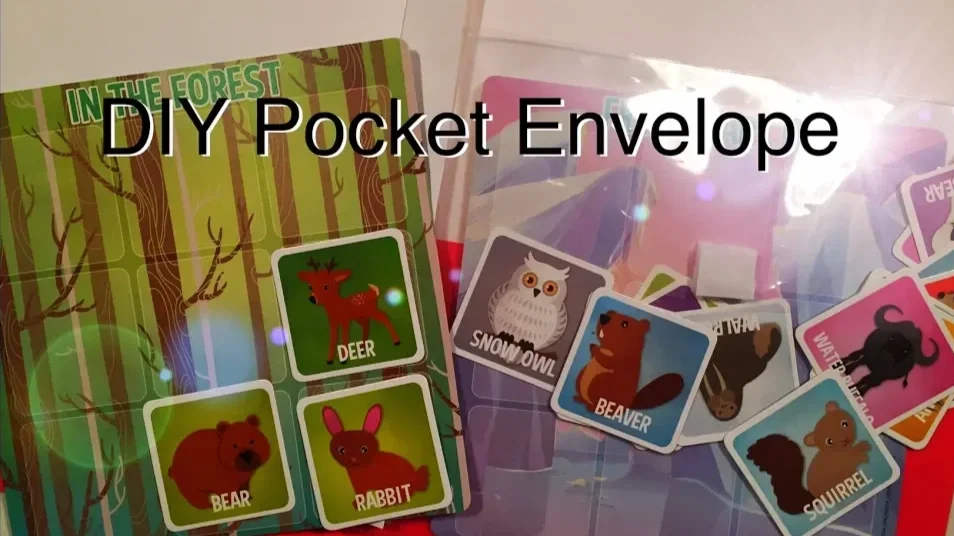
How to Make Pocket Envelopes for File Folder Games
If my curriculum isn't stored well, it doesn't get used; or, it gets lost or ruined. I came up with an idea to easily access and use some new activities I picked up from Target's Dollar Spot. I made pocket envelopes from 8.5x11 inch sheet protectors and stored them in inexpensive file folders with three-ring prongs. I slipped in my new supplies into the pocket and put it into the file folder. All of them are now stored in a hanging file drawer.
-
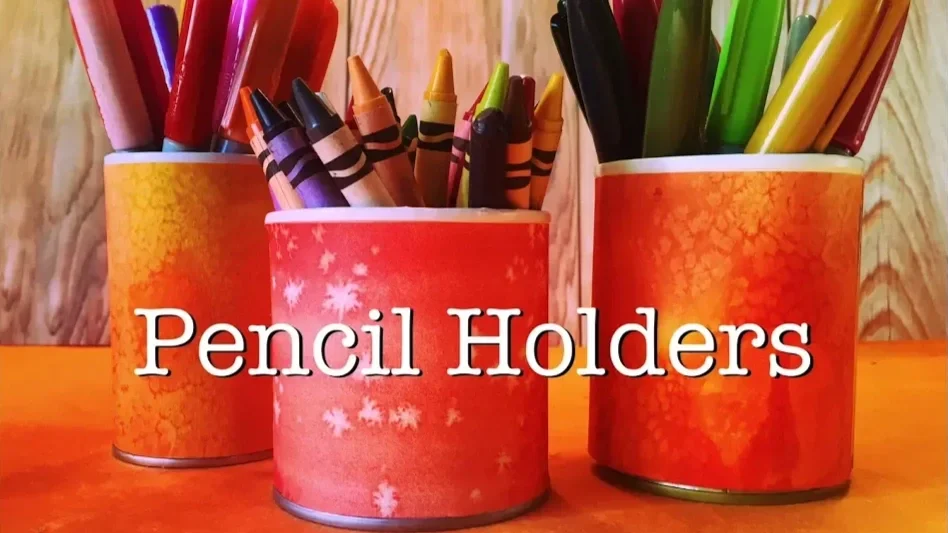
Upcycle Project | How to Make Pencil Holders from Tin Cans
Take any tin can and transform it into a pencil holder. Or use it to organize your art supplies! This super easy project is so satisfying and easy. Cover your cleaned tin can with construction paper, cardstock or make your own with watercolor paper.
-
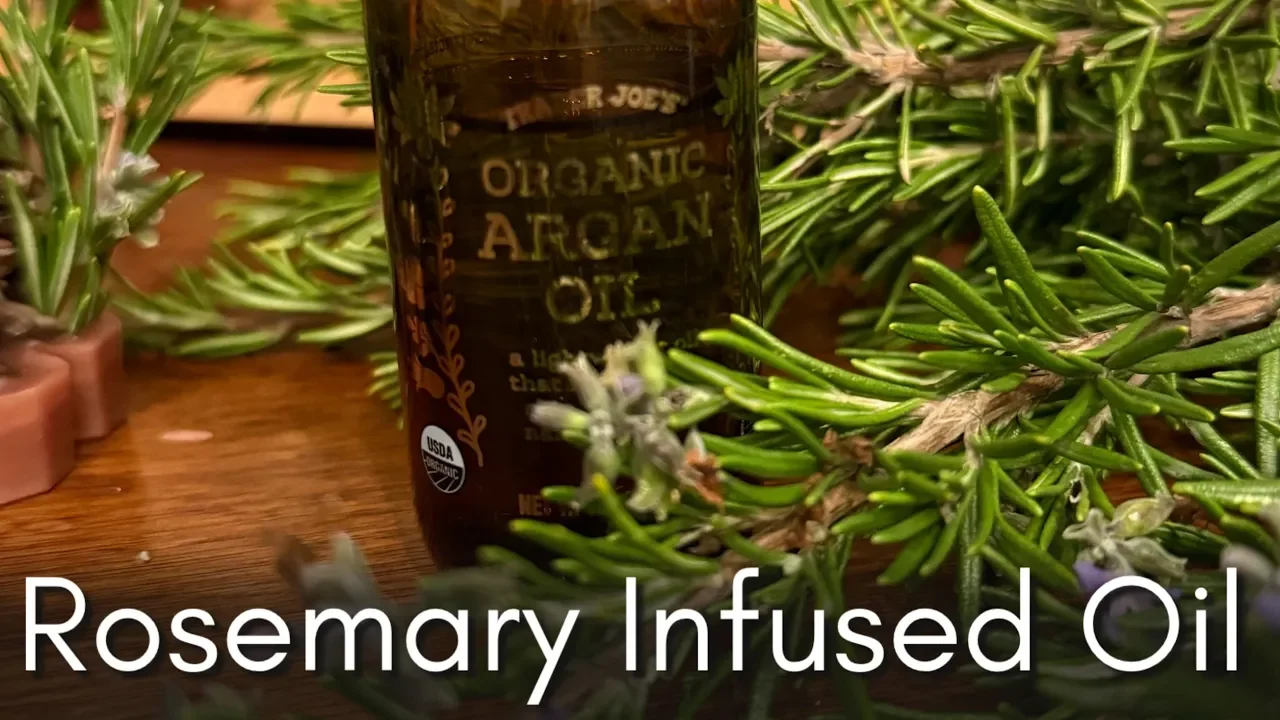
Rosemary Oil
Rosemary grows abundantly in our garden and is well suited for the Southern California climate. Aside from using it occasionally for cooking, I haven't enjoyed the benefits of fresh rosemary as much as I hoped. While I like rosemary essential oil for the health benefits, I didn't make use of fresh rosemary until now. It turns out it's quite easy!
Clothespin Planner | Meal Planner
These fun clothespin planners are a great way to visualize your week, especially if you have children. You could use them to show the activities you have planned, or who you are visiting but adding photos or images to the clothespins. We are using ours to meal plan. I have magazine clippings and personal photos of the recipes we would like to try to ones we already love that are our visual meal planner for the week. I have a huge stack of recipes from Hello Fresh, as well as dozens upon dozens of magazine recipe clippings that the children and I can choose from. I find the images of the food we want to make more appealing than a written meal planner and this way the family always knows what we are having and can make requests on their own.
Then when it comes time to shop for the week, I can see what ingredients I need based on the recipe directions from the recipe card or magazine clipping (or my personal photos which I've included my recipe on the back). I love this new way of meal planning as it involves the whole family in a fun and interactive way.
I've been taking photos of the meal and recipes I make for years and years, so now my next project is to make my own recipe cards on 4"x6" prints and store them in a recipe box so the family can easily pick and choose based on the meals I've made in the past.
How to Make an Oil Diffuser
Recently a friend gifted us a diffuser. The ones with sticks in a jar. My 10-year-old daughter loved it! And asked if we could make them. As a homeschooler and avid crafter, not only did I say yes to the idea, we did it right then! I repurposed various supplies and thankfully, I had everything on hand. We used old honey jars and other decorative jars we had been saving, I have a variety of essential oils to choose from, we used 1/8 inch dowels (you could use bamboo skewers) which I bought to make double pointed knitting needles, I had sea glass from our visits to the beach and gems and crystals from our geology unit for homeschool.
I trimmed down the dowels using a hand saw to 9 inches, but you can choose any size. The ones we bought were 12 inches long. I added decorative stones and gems or sea glass to the jar and filled it with water. I added 10-20 drops of essential oils. I used Young Living Peace and Calming and my daughter use Butterfly Express Spearmint. We inserted the dowels and stirred the oil into the water. It will naturally rest on top and eventually the water and oil will creep up the dowels.
After about 12 hours, your space will fill with the scent of your diffuser. Air circulation will affect the reach of the scent. I find them to be quite strong, especially in a small space like a bathroom. We put them all around the house. I like that they are all natural as I'm sensitive to perfumes and strong smells. We've only just made these so I don't know how long they will last, but you can leave a comment if you are curious, or you can message me on Instagram.
This project was super fast and my daughter ended up making 5 within an hour. To make it easier for her, she skipped trimming the dowels. She looked around the house for jars and would have made more if she had found more jars. I think they make a great gift and find them to be a wonderful project for children because it's so easy. Adult supervision is necessary when working with essential oils.
Lip Balm Tutorial
Making lip balm is more simple than I thought. With a few basic materials, you can make dozens of lip balms in just the right consistency and flavor. Plus, you can mind your ingredients so you're using the best ones available. For this project, we are using shea butter, coconut oil, beeswax and cocoa butter. We chose to make lip balm using shea butter because we learned that shea butter was a natural resource in West Africa. For our West Africa main lesson block, we ran short on ideas for projects and and hands-on activities. While this project may be a stretch, I do think that shea butter was likely used as a moisturizer in ancient times. And seeing as is was readily available in the dry regions, it seems perfectly logically that it would have been used in this way and likely other ways as well. For this project we also used a lip balm tray and lip balm containers. If you wanted, you could put your lip balm in a tin or plastic container and use your finger to apply the lip balm. We also used essential oils to scent our lip balm. Since we've made lip balm and bar lotion before, we didn't follow a recipe, and estimated measurements and proportions. In the end, our lip balm is smooth, all natural and smells good!
How to Make Bar Lotion & Lip Balm
This is hands down the best lotion ever! I’ve upgraded the ingredients, and this time around, I’m loving this even more than the first time we made bar lotion. This formula is super simple and the supplies are easy to find. I purchased everything from Amazon except the coconut oil which I got from Trader Joe’s.
Bar lotion formula: 1:1:1 ratio of Coconut Oil, Texas Beeswax, and Shea Butter. I used 1/2 cup of each with 2 teaspoons of lavender oil for the bar lotion. For the lip balm, I used 1/4 of each ingredient and 2 teaspoons of peppermint oil.
For this project we used a lip balm kit which included a tray, scraper, lip balm tubes and labels. To store the bar lotion, I bought metal tins that hold about 4 tablespoons of lotion and it makes the finished product look so professional!
Here are a couple tips while making bar lotion and lip balm. First, you can use equipment you already have, so there’s no need to shop for a special pan or jars. I used a saucepan with with a couple cups of water. I put it on the stove on medium heat. To the pan I added a glass jar for the ingredients.
If the ingredients are solid, you may need to melt them to measure them. Since I already have a candle making pan, I used it to melt the beeswax. You can buy beeswax pellets if you want to avoid that. They’ll melt faster and they’re easier to measure. I placed the jar of coconut oil in the same pot I used to make the lotion and warmed it enough to measure out what I needed. Once everything is measured, add it to the jar (I used an old honey jar) in the pot with hot water. Keep an eye on it. Once everything is heated all the way through, let it cool, but not harden before adding the essential oil. In my opinion, I think it keeps the oil from evaporating. Next, you can fill the metal tins or lip balm tubes.
Be sure you let the liquid cool if you are filling lip balm tubes. If you fill the tubes with liquid that too hot, it may seep out of the tubes. I highly recommend the kit we got. The tray and scraper made filling the tubes easy and clean. Plus, you can reuse any of the mixture that cools on the tray by scrapping it and warming it up again.
While the metal tins didn’t come with labels, the lip balm tubes did. I decided to make my own using adhesive kraft paper and my silhouette cameo. You can download my template and cutfile and customize it if you wish!
You can play around with the amount of beeswax you use if you wish to have a softer bar lotion. If you live in a warm area, making a harder bar lotion will ensure that it stays solid. Since doing this project, I’ve learned about other essential oil formulas to help with specific issues like headaches, stress and growing pains. My current favorite is lavender for calming and peppermint for headaches.
How to Make Greeting Cards
I love dipping into our supplies for projects that serve two purposes: art and education. These simple Thank You cards with an astronomical design (crescent moon on a night sky) were a fun excuse to pull out our Distress Inks, glitter and our Silhouette Cameo machine.
Using the Silhouette Cameo digital die cutting machine, I designed a crescent moon and Thank You script that would be easy to cut and adhere to a card base. Merging the letters so that it was one clean cut made it easier to add to the card versus adhering each letter.
We used three colors of Distress Inks on our card base which is my go-to watercolor paper: 90 lb. Fabriano watercolor paper. This is a hot press paper that contains 25% cotton. While it's not great for all watercoloring projects, it works well with Distress Inks and techniques that don't require a lot of water (otherwise the paper can buckle and if it's worked too much, it can tear). We used Faded Jeans, Chipped Sapphire and Stormy Sky. All these materials as well as the Silhouette Cameo can be found at Blick.
Once we watercolored the card base with wide brush strokes, we sprayed the wet paint with Heidi Swapp Color Shine spray in pearlized white shimmer. The resulting look was stunning.
Once it dried, we adhered the sentiment and crescent using 3M spray adhesive.
I used foam adhesive to back the watercolor to the card base.
We turned a simple art project into an educational project by writing thank you cards. My 12-year-old son and 8-year-old daughter used these cards to write thank you notes. It was a great penmanship and writing lesson, not to mention a great addition to a lesson on manners and behavior.
How to Make a Decorative Box | Upcycle DIY Project
Guess what!? I was going through the Pepper and Pine video archive and missed this video! I never released it, though there are several similar to this one that I did. I thought I'd share this blast from the past. I made this video over 2 years ago when I had just started my channel. I hope you enjoy this little bit our Pepper and Pine history.
Upcycle any box! In this double tutorial, I make some mistakes. Watch to see how you can remedy some problems associated to cover boxes in this upcycling tutorial.
Make sure it's well made and sturdy. All you'll need for this project is lokta paper (found at dickblick.com), spray adhesive, scissors (I prefer non-stick scissors), label pulls, and metal brads.
Supplies can be found at local craft stores or online at Blick.
Metal pulls can be found at LillianOlive Etsy shop
Coupon Deal: WINTER16 for 5% off your order! Woohoo!
Duration: 15 minutes
Level: intermediate
Cost: $5/large box, less for the smaller boxes
Scarf Pin Tutorial
If you want a super cute way to store scarf pins, try this little clay pot filled with florist foam and topped with moss. Make your own flower pins to complete this super adorable look. The scarf pins are just straight pins that can be used to keep your hijab in place, or you can use these pins to keep notes on a cork board. Whatever you decide to do with these scarf pins, keep some of them in this clay pot for constantly blooming bunch of flowers.
The products I used today can all be found at Michaels craft store, or a similar craft store. I used the following materials:
Clay pot, florist foam, moss, straight pins, polymer clay (I prefer the clear kind), Swarovski crystals and Tombow mono adhesive glue.
You will also need to bake the polymer clay.
Check out some of my other projects and tutorials here.
How to Make Bar Lotion for Beginners
This bar lotion is so easy to make, with no special equipment, you’re sure to be making your own in no time. Made with just three all nature ingredients, these luxurious bar lotions will be your favorite in no time. They also take no time to make! With about 5 minutes of prep, 15 minutes to melt and another 10 minutes to pour, set and clean up, you’re likely to be making these often and for everybody!
This recipe calls for one to one to one ratio of beeswax, shea butter and coconut oil. We used unrefined filter beeswax from a local distributor (Topanga), organic coconut oil from Trader Joe’s, and unfiltered raw shea butter from a distributor on Amazon. While the coconut oil and beeswax smell amazing, the shea butter takes some getting used to. It also overpowers the other flavors and makes it hard for the essential oils to come through. I used about 1-2 teaspoons of essential oil for every batch which is 1/2 cup of beeswax, 1/2 cup of coconut oil and 1/2 cup of shea butter.
Once the ingredients are placed in a glass jar, put it in a pot of simmering water. The higher the water level, the quicker it will melt. Stir occasionally. Once the mixture is fully melted, remove from the water and let sit for no more than a few minutes before adding your essential oils. I added about 2 teaspoons. Mix and pour into your molds, jars or tin cans. It cools very quickly and depending on how thick your mold is, the bar lotion can solidify within 15-30 minutes. You can use it right away! Store in a cool place if it is not enclosed in a jar. If it’s enclosed, and you leave it in a warm place, your lotion will liquify. Don’t worry! You can still use it. To use, add a generous amount to hands, arms, legs and feet. You can scoop it out of the container or rub the bar lotion in your hands to warm it up or rub directly onto your skin.
Here are some more projects and tutorials you might be interested in.
DIY Superhero Masks | Tutorial
I didn't think making our own superhero masks was going to be as fun as it turned out, but it was awesome!!! My kids started out by making three masks each, but quickly asked to make more. I got in on the fun and made one, too, then another and then a few more!
This superhero mask kit is from Over The River Felt. I asked if they would send me this kit because I thought it was brilliant and wanted to share it with you. This kit didn't disappoint! It was everything I hoped and more! This was make a fantastic party activity. Be a birthday or end-of-year party, this kit would be a perfect make-n-take. Instead of buying pre-made party favors, you could make them! The kids would definitely have more fun making them, and I guarantee they will cherish them far more and far longer than any store bought mask. And added perk is that this felt is a good quality wool blend which is a big step up from your craft store acrylic felt. This wool blend (20-35% wool and 80-65% rayon) ensures that your project will be durable, last longer and wear better. Though there may be some pilling over time, it's nothing compared to the pilling that occurs with low quality acrylic felt that looks used and ratty in no time, especially with excessive use.
We assembled our masks using hot glue (not included in the kit), but everything else we needed was included. If you wanted to add some bling, you could glue on some rhinestones for unique look. We also glued the elastic using hot glue and so far, it's held up just fine. If you were concerned, you could stitch the elastic in place.
We made 15 masks with enough spare materials to make two more. I highly recommend this kit. It's good for all ages, but if young children are making them, they will need assistance to stitch or glue their masks.
You can find more of our tutorials here.
Check out this kit here.
1 Minute Crafts | Upcycle Tin Can
This is a super easy upcycling craft you can do with any tin can and some decorative paper. Just use electric tape along the edge of the can to protect yourself from sharp edges. File down any protruding edges before applying tape. Use double stick tape to adhere scrapbook or watercolored paper to the outside of the tin can. Be sure your can is thoroughly cleaned inside and out before taping your paper in place.
You can find more of our tutorials here.
How to Bind a Book | Book Binding Tutorial
Here's one way to bind a main lesson book after you've completed your work. If you wish to use multiple art mediums for a main lesson block or if you are working with watercolors, binding your loose sheets of papers along with your narrations after the block is over is one way to do it. You can bind the papers easily with a three-hole punch and a binder if you use 8.5x11 inch paper, or you can do a staple binding. If you want to take it up a notch, head over to your office supply store and have them do a coil or spiral binding. It's fairly easy and affordable.
Today, I'm showing you how to use a home binding system to bind a book. I'm using the Heidi Swapp Cinch machine available online and at local Michael's craft stores. You buy metal binders in white, black or silver in sizes ranging from .5 inch to 1.5 inches.
If you want to see the projects we did for our Ocean Main Lesson block, you can click here.
You can find more of our tutorials here.
DIY Fairy Wands
I love making things for my children, and this craft delighted them! I’m going to show you four different ways to make these wands. This project is fast, easy and affordable. You can find all supplies at your local craft store and with four methods to choose from, you’ll find one that suits your skill level.
These Fairy Wands or Fairy Dusters are a crafty durable solution to plastic wands found at most stores. You can decorate and accessorize to meet your child’s needs. These toys help facilitate hours of creative open-ended play your children will love. Play is an important building block in the development of a child.
Supplies:
Dowels 1/4″x12″ (one for each wand), paint or markers, wool or cotton balls, felt, accessories like gold twine, gems, embroidery floss and sequence, scissors, template, glue gun and glue, and needle if you plan to sew your felt.
Directions:
Plug in glue gun. Paint dowels and set them aside. Cut templates and felt. Begin gluing felt, leaving an opening for wool or cotton balls and the dowel. Fill design with wool and add a generous amount of glue inside design. Slip dowel in and secure the edges with more glue. Add accessories to finish off the fairy wand. Enjoy hours of play!
How to Use chalkboard Paint
I love having a large chalkboard, but over the years, the texture was smoothed out from repeated use. This made drawing with pastel chalk very frustrating as none of the chalk would stick when we did our Waldorf inspired chalk drawings. The chalkboard was just too smooth. I called the company who makes the chalkboards and asked what I could do and basically there was nothing I could do. And if I painted it with chalkboard paint I would ruin it. So for another four years, I lived with it, ever more frustrated and annoyed each time I attempted a chalk drawing. Finally this week I resolved to paint the chalkboard. It was becoming useless, and I saw no other way.
So, I went over to Home Depot and bought a can of Rust-Oleum chalkboard paint. I had them mix it while I was there for good measure, then drove home and painted. Well, first I agonized over it just a wee bit longer. My 14 year helped me unmount our chalkboard and take it to the balcony, so I could paint in a well ventilated area.
I looked at the paint questioningly, then finally started. There was no going back. I painted a single coat that evening, and another one the following morning. Later the next day I remounted it. Watch and see whether it was a huge success or a big failure!
Dollar Tree Craft | Doll Furniture
This is one super simple craft to personalize a little bed from the Dollar Tree.
It feel it’s hit or miss when buying toys from Dollar Tree, but these dollhouse furniture pieces are definitely a win! I’m impressed with the quality and durability of these pieces, not to mention they are made of wood! I think it’s balsa wood which is soft and lightweight and easily damaged, so care is still needed when handling these pieces. But the plus side is that if anything breaks off, at least you can glue it back together…not so with plastic toys, especially the cheap ones which tend to break easily and right away! There were several pieces of furniture available: dinning room table, chair, bed, short dresser, tall dresser and high table. The pieces are are charming, detailed and seem pretty durable for something from the Dollar Tree.
For this project, we altered a bed with a bit of fabric left over from the rag dolls I made my daughter, some wool and hot glue. This is a very quick and simple craft and and it’s a great way to personalize a store bought item.Materials: Dollar Tree bed, fabric, wool or cotton balls, glue
Cost: less than $2
Level: easy
How to Cover Any Box | Upcycle Tutorial
Guess what!? I was going through the Pepper and Pine video archive and missed this video! I never released it, though there are several similar to this one that I did. I thought I'd share this blast from the past. I made this video over 2 years ago when I had just started my channel. I hope you enjoy this little bit our Pepper and Pine history.
Upcycle any box! In this double tutorial, I make some mistakes. Watch to see how you can remedy some problems associated to cover boxes in this upcycling tutorial.
Make sure it's well made and sturdy. All you'll need for this project is lokta paper (found at dickblick.com), spray adhesive, scissors (I prefer non-stick scissors), label pulls, and metal brads.
Supplies can be found at local craft stores or online at Blick.
Metal pulls can be found at LillianOlive Etsy shop
Coupon Deal: WINTER16 for 5% off your order! Woohoo!
Duration: 15 minutes
Level: intermediate
Cost: $5/large box, less for the smaller boxes
How to Make Fairy Paper Dolls
Inspired by the paper dolls from the book "How to Get Hijab Ready", I made for my daughter a set of paper fairy dolls because she wanted fairies with wings! I don't know how to draw so I copied (somewhat) the dolls available for download here.
I drew the fairy on a piece of paper, erasing a lot as I went along!! Once I was satisfied with the design, I outlined it with a sharpie. I then scanned it and uploaded it in to my Silhouette Cameo program so I could trace the design so it could be cut. I printed out the design on glossy magnetic paper, then sent it through by Cameo to cut. I used Copic markers to color the fairy and G-Studio glitter glue for accents.
Copic markers are alcohol based markers that can be found at Blick or local craft stores.
I also used glitter glue and some bling you can find at Michaels or other craft stores.
Level: Easy
Duration: 20 minutes
Cost: under $5 for the magnetic sheets (markers are about $5 each)
See the book that inspired the paper dolls.
How to Cover a Macbook Box | DIY Upcycling Tutorial
Do you have a Macbook box? Maybe keep it and cover it for beautiful storage. For this project, I used Lokta paper in the color Pumpkin, which has a rich handmade texture. I started by removing the interior insert from the box and preparing my tools, which included a paper piercer, scissors, an X-Acto knife, a label pull, and brads. After spraying the paper with adhesive in a well-ventilated area, I pressed the box onto the center of the sheet, making sure it adhered smoothly before trimming the edges.
To wrap the box, I cut along the corners and left about a quarter inch of extra paper along each edge to fold over for a clean, finished look. I used the X-Acto knife for precise cuts and adjusted a few areas where I trimmed too close by patching with small leftover scraps, which blended in once the paper was secured. After trimming and folding in the corners, I wrapped the paper neatly inside the box. It was satisfying to see the smooth edges and how well the paper adhered. I then trimmed and fitted a final piece for the interior base, pressing it into place to cover any visible white areas.
To complete the project, I added a metal label pull to the front using brads and the paper piercer to secure them. I finished with a simple kraft paper label stamped with black ink that read “Today.” The result was a refined, functional storage box that looks elegant on any shelf. This upcycled box took only a few minutes to make and turned out beautifully. For more box-covering and paper craft tutorials,
Upcycle any box! In this double tutorial, I make some mistakes. Watch to see how you can remedy some problems associated to cover boxes in this upcycling tutorial.
Make sure it's well made and sturdy. All you'll need for this project is lokta paper (found at dickblick.com), spray adhesive, scissors (I prefer non-stick scissors), label pulls, and metal brads.
Supplies can be found at local craft stores or online at Blick.
Metal pulls can be found at LillianOlive Etsy shop
Coupon Deal: WINTER16 for 5% off your order! Woohoo!
Duration: 15 minutes
Level: intermediate
Cost: $5/large box, less for the smaller boxes
What is Project Life? | Scrapbooking for Beginners
Ever wonder what Project Life is all about? Even if you're not crafty, I think anyone can do Project Life scrapbooking. It's so easy. All you need is an album, sheet protectors and a Project Life kit. That's it!! I'll show you the different products you need to complete an album. The cards are so beautiful you don't need any other embellishments, but if you want, you certainly can decorate the cards with die cuts, stickers and more.
I've been using the Project Life system to document our homeschooling journey, and it has become one of my favorite albums.
Want to see me put together a Project Life page for my homeschool album?
Learn more about Project Life.
How To Make Paper Dolls
Print out paper dolls on glossy paper backed with magnetic sheets so paper dolls can have interchangeable outfits! I thought the idea was perfect for these paper dolls I downloaded here.
Turns out my four year old daughter wanted the outfits permanently attached to each doll! So much for my creative inspiration, but maybe you'll find this project just the ticket for your paper dolls.
I used Copic markers to color dolls and and outfits. The glossy paper took the markers really well, and I am really pleased with the final outcome. Copic markers are alcohol based markers that can be found at Blick or local craft stores.
I also used glitter glue and some bling you can find at Michaels or other craft stores.
Level: Easy
Duration: 20 minutes
Cost: under $5 for the magnetic sheets (markers are about $5 each)
See the book that inspired the paper dolls.
Upcycle an iPhone Box
Learn how to upcycle and cover an iPhone box. These are some of the nicest sturdiest boxes. They are so nice, it’s impossible to throw out. So, after many years and many boxes (some gifted), I have made a dozen covered boxes that have served as a storage and organization tool.
Upcycle any box! In this double tutorial, I make some mistakes. Watch to see how you can remedy some problems associated to cover boxes in this upcycling tutorial.
Make sure it's well made and sturdy. All you'll need for this project is lokta paper (found at dickblick.com), spray adhesive, scissors (I prefer non-stick scissors), label pulls, and metal brads.
Supplies can be found at local craft stores or online at Blick.
Metal pulls can be found at LillianOlive Etsy shop
Coupon Deal: WINTER16 for 5% off your order! Woohoo!
Duration: 15 minutes
Level: intermediate
Cost: $5/large box, less for the smaller boxes
How to Cover and Upcycle an iPhone Box
Are you here watching this in 2025? Do I have a story for you... Back in 2016, I recorded a number of videos of upcycling iphone, Macbook and other boxes. These durable boxes were perfect as organizational bins. I saved them and was even gifted empty boxes from friends and family who knew I could use them. I had so many boxes and so many videos, this one never got posted here. So, after nearly 10 years, I present to you a video from the deep archives of Pepper and Pine. Enjoy!
Upcycle any box! In this double tutorial, I make some mistakes. Watch to see how you can remedy some problems associated to cover boxes in this upcycling tutorial.
Make sure it's well made and sturdy. All you'll need for this project is lokta paper (found at dickblick.com), spray adhesive, scissors (I prefer non-stick scissors), label pulls, and metal brads.
Supplies can be found at local craft stores or online at Blick.
Metal pulls can be found at LillianOlive Etsy shop
Coupon Deal: WINTER16 for 5% off your order! Woohoo!
Duration: 15 minutes
Level: intermediate
Cost: $5/large box, less for the smaller boxes
How to Make a DIY Craft Mat
I learned how to make these craft mats from another YouTuber years ago; the only alteration I make to them is to add Con-Tact paper to one side to make a non-porous craft mat for watercolors. These craft mats are made from paper bags you get from the grocery store. Additional supplies are painter's tape or masking tape, and Con-Tac paper (optional). You'll also need a pair of scissors.
Duration: 5 minutes or less
Level: Easy
For more pictures.
Here’s how to make your own upcycled craft mats using simple materials you already have at home. This quick project takes less than five minutes and works perfectly for art and watercolor activities.
Materials
Paper grocery bags
Painter’s tape or masking tape
Contact paper (optional)
Scissors
Optional: a craft knife or ruler for straight edges
Step 1: Prepare the Paper Bag
Start by removing the handles from your paper bag. Tear them off gently rather than cutting to avoid ripping the paper. Separate the front and back panels of the bag by carefully pulling or cutting along the seams. Cut away the bottom section so you are left with one large, flat piece of kraft paper.
Step 2: Fold and Tape the Edges
Fold the paper in half so that the edges line up evenly. This creates a thicker and sturdier surface. Use painter’s tape or masking tape to seal all four edges. The tape adds strength and gives a neat border. Trim any extra tape with scissors. At this point, your basic craft mat is finished and ready to use for painting, gluing, or other projects.
Step 3: Optional Contact Paper Version
For a water-resistant option, cover one or both sides with contact paper. Peel and stick carefully, smoothing out air bubbles as you go. Repositionable contact paper is best if you want to make adjustments. It is not ideal for young children since the edges can be tempting to peel. This version creates a non-porous surface that works well for watercolor and ink art.
Step 4: Use and Clean the Craft Mat
You can use the contact paper side for watercoloring or blending inks. Press ink pads onto the surface, spray or drip a little water, and mix your colors directly on the mat. When you are done, simply wipe it clean with a damp paper towel. The other side of the mat can be used for cutting, drawing, or other dry crafts.
This project turns a simple paper bag into a durable, reusable art mat that is inexpensive and easy to customize for any homeschool or craft space.
Upcycle an iPad box | DIY Tutorial
Upcycle any box! In this double tutorial, I make some mistakes. Watch to see how you can remedy some problems associated to cover boxes in this upcycling tutorial.
Make sure it's well made and sturdy. All you'll need for this project is lokta paper (found at dickblick.com), spray adhesive, scissors (I prefer non-stick scissors), label pulls, and metal brads.
Supplies can be found at local craft stores or online at Blick.
Metal pulls can be found at LillianOlive Etsy shop
Coupon Deal: WINTER16 for 5% off your order! Woohoo!
Duration: 15 minutes
Level: intermediate
Cost: $5/large box, less for the smaller boxes
How to Make Pocket Envelopes for File Folder Games
If my curriculum isn't stored well, it doesn't get used; or, it gets lost or ruined. I came up with an idea to easily access and use some new activities I picked up from Target's Dollar Spot. I made pocket envelopes from 8.5x11 inch sheet protectors and stored them in inexpensive file folders with three-ring prongs. I slipped in my new supplies into the pocket and put it into the file folder. All of them are now stored in a hanging file drawer.
Supplies needed: File folders, sheet protectors, scissors or X-acto knife and cutting mat, score board, hot glue gun & glue, and Velcro.
Duration: less than 5 minutes each
Level: intermediate (just because you might not have these supplies on hand)
To see my homeschool haul from the dollar spot, tap here.
How to Make Pencil Holders from Tin Cans
Take any tin can and transform it into a pencil holder. Or use it to organize your art supplies! This super easy project is so satisfying and easy. Cover your cleaned tin can with construction paper, cardstock or make your own with watercolor paper.
I'll show you two techniques using Tim Holtz Distress Inks as watercolors.
For this project you'll need clean tin cans (any size) watercolor paper, watercolors, paint brushes, double-stick tape, clear tape, electrical tape, scissors and salt (optional).
This is a great upcycling project that kids and adults will have fun doing.
Rosemary Oil
Rosemary grows abundantly in our garden and is well suited for the Southern California climate. Aside from using it occasionally for cooking, I haven't enjoyed the benefits of fresh rosemary as much as I hoped. While I like rosemary essential oil for the health benefits, I didn't make use of fresh rosemary until now. It turns out it's quite easy!
Rosemary infused water and oil may be used for hair and scalp health. Some have noted that it helps with hair growth. The benefits of herbs in general are well known, but each herb has unique qualities.
I have used Argan oil for years ever since a friend brought some back from Morocco, a country known for their Argan oil. To make rosemary infused oil for hair and scalp health, I opted to use argan oil. I cut a few sprigs of rosemary from my yard. I did not wash it, but if you choose to wash it, make sure it's completely dry before adding oil.
I cut mine up and placed it in a mason jar. I emptied a small jar of argan oil over the rosemary ensuring that all the rosemary was covered. There are a couple methods to infuse oil. You may leave it covered outside in the sun for 2 weeks, or put it in the oven for 2 hours. I placed it in a barely warm oven (about 150 degrees) and left the oven door open. I left for about 2 hours, then let it cool down naturally. The following day I poured off the oil back into the jar.
If you prefer to decant your oil into a smaller jar (let's say you are buying your oil in bulk), I found glass bottles with pipet dropper from the Dollar Tree.
Next, you may use the oil on your hair or scalp. The rosemary scent is light, but distinct.

